It’s been a few months since Whoop announced their new Whoop 4.0 sensor, and after enough use for me to call this review ready – it’s time to dive (deep) into the details. While the new Whoop 4.0 looks physically similar to the previous 3.0, it’s a significantly different beast of hardware. Sure, it now includes both skin temperature as well as SpO2 sensors. But the real difference you (should) actually care about is the change to the heart rate sensor itself.
See, the entirety of Whoop as a platform revolves around that heart rate sensor. Thus, if that heart rate sensor is inaccurate – absolutely nothing else in Whoop’s app matters. Inversely, if it’s accurate – then we can dive deeper into whether there’s value in the greater Whoop platform, given its pricing of $30/month (albeit substantially less if you buy it in 12 or 18-month chunks).
Stepping back to basics though, Whoop’s purpose in life is to try and figure out whether or not you’re training too much or too little, and whether or not you’re sleeping too much or too little. That’s it. It’s not a daily step counter, nor a smartwatch with a display, nor an activity tracker. It doesn’t even let those two Whoop pillars of functionality (training & sleep) mix much in its grading of your results for each pillar.
For those semi-long-time readers, you’ll know I started testing the previous generation Whoop 3.0 nearly two years ago. In fact, I’d take a pretty safe wager that nobody on this planet has as many comparative workout sets (in terms of quantity of comparative HR sensor devices per workout in total) than I do with respect to Whoop. Some 400+ workouts, each with 2-4 other heart rate sensor devices. And the sum total of Whoop 3.0 is that it was arguably one of the worst mainstream optical HR sensors ever made. It was objectively horrible – not just by my tests, but by virtually every trusted reviewer in this space. And given the entirety of Whoop’s data is based on heart rate sensing, all further calculations were just hot air.
But 4.0 promised significant steps in its accuracy. Therefore, that brings us to one singular question: Is Whoop 4.0 finally accurate? For that, there’s a lot to talk about. A lot of nuances, and a lot of things to digest. Sorry, there are no easy answers here.
So let’s dig into the details.
(Note: I bought this unit myself, in that I’m a paying Whoop subscriber, and thus, I reserved my upgrade early and waited a while. Back in October, while that was happening, Whoop also delivered a 4.0 media-loaner unit to get started on testing. That’ll go back to them shortly, and I’ll just keep the one I own. That’s how I roll. Oh, and I also bought a bunch of Whoop Body stuff too, to test, also in this review.)
What’s New in 4.0:
Since I cover all of this stuff in far more depth in this post, I’m gonna keep this section as brief and to the (bullet-)point as possible. Here’s what’s new in Whoop 4.0 versus Whoop 3.0:
– New sensor: This now has 5 LEDs (3xGreen, 1xRed, 1xInfared) compared to the previous 2xGreen. It now has 4 photodiodes, versus the 1 previously.
– Added Skin Temperature: We’ve seen this on a few wearables over the years, and is often used with sleep data
– Added Blood Oxygen monitoring: Measures SpO2, which is often used in both sleep-related data and high altitude data
– Added Sleep Coach with on-device alerts: This will wake you up based on optimal sleep cycles
– Added haptic motor (vibrations): This means the band can now alert you to things, starting with waking you up via Sleep Coach
– Added “Health Monitor”: This is more of an app dashboard thing, which shows live HR/skin temperature/blood oxygen/resting HR/HRV/respiratory Rate
– Added PDF Export of Health Monitor: This allows you to export out your Health Monitor dashboard metrics in a PDF for doctors/sports staff/etc in 30-180 day chunks.
– New Battery Design: Whoop says that they’re the “first product in the world” to use Sila’s new Silicon anode battery, which has 17% higher energy density and longer cycle life
– 5-day battery life: The unit maintains the previous 5-day battery life claim, despite the unit being much smaller
– New Whoop Battery Pack: This new pack is waterproof (woot!) and allows a double-tap for battery level
– Smaller size: Whoop says it’s now 33% smaller than prior
In addition to that, there’s the new Whoop Body, which is essentially a line of apparel that holds the Whoop sensor so you don’t have to wear it on your wrist. These products include:
– Compression tops ($64)
– Leggings ($109)
– Shorts ($78)
– Sports bras ($79)
– Bralettes ($54)
– Athletic Boxers
– Regular Boxers (two-pack for $69)
– New ‘SuperKnit’ and ‘HydroKnit’ bands
Got all that? Good, let’s get rollin’.
Oh, actually, one more thing. For lack of anywhere else to stick it, Whoop pricing is $30/month. There is no cost for the device itself. Instead, you ‘merely’ commit to a 6-month membership, and then the device comes with it. Further, for existing members, you get the new 4.0 device automatically, for free (as long as there are 6 months left on your membership). If you buy your membership in 12 or 18-month chunks, then it reduces the cost down to about $18/month (18-month).
In terms of Whoop 4.0 availability/shipping/delays, like most things in 2020/2021, it’s a proper mess. And like most companies these days, a chunk of that is to blame on the world situation, and a chunk of that is to blame on poor communications. I don’t see much value in focusing on that in this review, even despite Whoop’s recent increase in communications over the past few days trying to satisfy users. It is what it is, and honestly, it doesn’t have any impact on what happens after you receive that device, which is what my review is actually about. There’s plenty of other things here for me (or you) to have legitimate complaints about (you know, like a lack of API, ability to properly export data files, etc…).
Ok, now, it’s time to get rolling.
What’s in the Box:
The Whoop 4.0 box is a pretty straightforward affair. You’ll undo the cardboard zipper to reveal the Whoop 4.0 strap folded up inside. Below deck is the charging pod, along with a beef stick of a USB cable. Also, some paper stuff you won’t read. Here are all the parts out on the table:
The Whoop 4.0 pod has cardboard stuffed in it to keep it looking pretty, so you’ll remove that, along with the protective film on the sensor.
The strap and hinge design are different from 3.0, which we’ll get to in a moment.
There’s the new wireless charging battery pack, meaning that it’ll wirelessly charge your Whoop 4.0, but itself it needs to be charged via USB-C cable:
While you can use most USB-C cables, they do include the beefiest yet shortest USB cable I’ve seen in my life. It’s like this cable desperately wants to grow up to be one of those overpriced $60 HDMI cables you see, but then life got in the way:
In any event, here’s the Whoop 3.0 (my beaten up one, with a touch bit of mountain bike dirt on it) and Whoop 4.0 side by side:
And here’s the two battery packs side by side:
With that, let’s dive a bit deeper into the hardware.
The Hardware Basics:
The Whoop 4.0 pod might look similar from across the room, but once you open the clasp, you realize it’s substantially different. They’ve ditched the charging contact points on the side for wireless charging, and the bands can now quickly slide on and off (avoiding having to thread the fabric like before). It’s a far more polished design than previously, especially if you change bands often (and logically, now makes secondary accessory band purchases more appealing). Of course, the main reason for cleaning up the entire clasp situation is for Whoop Body, the apparel line that integrates with the 4.0 sensor. More on that in a second.
The Whoop 4.0 pod, as with past units, has no display on it.
Instead, everything is about the underside – the sensors under it. This is where Whoop has changed sensors, and the quantity of those sensors, as outlined earlier, all in an attempt to increase accuracy (plus, give more data, like SpO2 readings).
You can slide the band off the sensor pod, leaving just the sensor itself. This then allows it to be slid into various Whoop Body garments:
Whoop has a number Whoop Body garments at launch, including ones for both workout and the rest of the day. These include workout shorts, compression leggings, compression tops, sports bras, and armbands. On the 24×7 side, they include boxer-briefs and bralettes.
In my case, I bought a pack of boxer-briefs, the workout shorts, and an armband. Plus also a bicep band. I’ve been testing all of them, and have the results included in the appropriate sections below (e.g. sleep, workout, etc…), as well as a dedicated Whoop Body section below.
Back on the pod, as part of the design change, Whoop introduced a new battery pack. Whoop has always charged via this battery pack, which acts like a mid-air refueling tanker. It’s arguably one of the best parts of Whoop, and means you never have to take your device off your wrist to charge. The battery pack itself charges via USB-C, and is now a waterproofed port. You can see it has a single status light on it, that either shows red, or green – depending on if it’s happy and fulfilled in life, or not.
You simply slide the battery pack onto the Whoop 4.0, and it snaps in place. The fit is snug. On one unit of mine, it slides it cleanly, but on the other one, it’s super-duper snug (too snug). Maybe it’ll loosen up over time.
With the battery pack having a waterproof charging port, it means you don’t have to worry about wearing it in the shower with the battery pack attached. I’ve killed one previous Whoop 3.0 battery pack that way (though, it did take probably half a dozen showers over the course of a year to kill it).
In terms of the new battery pack design, I’m mixed. The new battery pack takes longer to charge itself, and then takes longer to charge the Whoop 4.0. Whoop says 2 hours to transfer wirelessly from battery pod to Whoop 4.0, and my testing puts that virtually spot on. In one test I placed the battery pack on the Whoop while the Whoop 4.0 was at 10%, and I kept taking screenshots over the course of just shy of two hours until it was completed charging:
In most cases, this isn’t a big deal – though if realizing (like yesterday) that you are down to 4% and want to go for a workout using Whoop Body gear (where the battery pack won’t fit), then the slower charging is a pain (whereas the Whoop 3.0 charged incredibly quickly, especially initially). As a general rule of thumb for 4.0, 1 minute = 1%, up till around 80% or so, and then it gets slower from there till finish. So while the new one is slower to charge/discharge, and a bit more bubbly than the last one in height – I significantly appreciate the waterproof port on it.
Finally, in terms of battery life, I’ve seen (numerous) comments in all manner of locations that folks are having issues with the Whoop 4.0 battery. In my case, I’ve been somewhat lucky there and haven’t seen anything different or odd. I have two Whoop 4.0 units, and three batteries between them. The first unit was delivered from Whoop themselves, with them clearly knowing it was going to me (and QA’d as such). However, the second 4.0 unit went through normal fulfillment (me ordering it on day of launch), shipped from their EU distribution center.
I don’t see any evidence they had any ‘extra’ control over this second unit. Mainly because they didn’t know/realize I still had that order pending, until after it had shipped through the regular customer queue. Also, unlike my first unit, this one was in a fully cardboard-zipper-sealed box – meaning it came straight from the factory as-is.
None of that is to discount the battery issues folks are seeing (obviously, they are real), but simply to note that it’s not every unit (and, I’m guessing it’s %-wise a small number, based on my napkin math for unit shipments vs battery issues). It also sounds like a recent firmware update has helped a number of people with battery issues. Either way, I’ll be keeping an eye on it.
The Whoop Basics:
The first few days with Whoop can be a bit perplexing, though that experience has gotten better in the last year or so with new wizards and onboarding screens that show during that first week. However, the core thing you need to know once you’ve got Whoop paired up to the app is that Whoop basically measures and reports on two core things:
A) Strain: How hard you worked out that day
B) Recovery: How well you slept that night
I note that because the Whoop band doesn’t really track anything else. It’s not going to show you steps, nor will it show you miles run, or sets completed in the gym.
Now, strain is derived *PURELY* based on heart rate. The higher your heart rate, the more strain you accumulate. This means that technically speaking, strain can be accumulated throughout the day anytime your heart rate rises. For example: A brisk walk, playing with your kids, or making kids (including practicing). However, doing an activity by itself doesn’t contribute to strain. Meaning that you can casually walk 10 miles, and if your heart rate stays low enough, there’s no added amount of strain. Your daily strain starts off at 0.0, and then climbs in value throughout the day, accumulating as you go along.
The intensity of the workout drives the strain, not the duration. Of course, the longer you have a higher intensity, the more strain you’ll get. It’s notable though that strain isn’t comparable between yourself and friends. That’s because it’s based on your specific intensity and heart rate zones. Meaning if I go for a Turkey Trot run with a World Record marathoner, his strain will be far less than mine – since it’ll seem easy to him effort-wise (and HR-wise).
Within the Whoop app, anytime you do a workout it’ll show the stain value next to it (14.1 below). Additionally, you’ll see your total strain at the top of the app (14.6). This is the main page in the Whoop app, and what you’ll see every time you open the Whoop app.
If you tap on ‘Strain’ at the top, you’ll get a big oversized number, showing you the same number as before. However, if you swipe down you’ll see that week’s strain. You can also tap the date ranges up top to look at other weeks:
It’s really as simple as that. Everything is about that number. We’ll dive into the workouts and what you see within a workout in the next section. But otherwise, it’s all about your heart rate throughout the day. The theoretical max strain Whoop will ever give is 21. Meaning that, unlike most other training load accumulation platforms which allow unlimited strain (load), Whoop’s algorithms top out at 21. The challenge with this is that it just doesn’t work out in real life. It assumes that once you reach 21, you should basically be unable to do anything else athletically. But in real-life, as Whoop themselves showed with their sponsorship of Team EF in the Tour de France both last and this summer, they basically hovered at 20 each day for weeks. In real-life, that shouldn’t be possible, no matter how good an athlete you are. If indeed 21 is the absolute max you can achieve in a day where you drop of exhaustion, then realistically speaking you shouldn’t be able to do that for multiple weeks on end.

Anyways, if you want to see your entire day’s heart rate, it’s best to use the Whoop website for that. While you can do it on your phone by turning it sideways, I find it finicky and slow (at best), especially when moving between days. The website works exceptionally well here, and allows you to zoom/crop as you see fit to specific timelines.
Now one of the key challenges I had with Whoop 3.0 is ‘fake strain’ and ‘fake workouts’. This often happened when Whoop *thought* I was doing a workout and I very much didn’t. In those workout cases, I’d see heart rate spikes to 150-160bpm (which would add fake strain). For example sitting on the ground slowly picking weeds, or casually doing the dishes, or even easy-pedaling an e-bike. These were all cases of an inaccurate optical heart rate sensor and/or algorithms. My heart rate was never anywhere near those levels. Unfortunately, there was, and is, still no way to ‘erase’ fake strain in Whoop (to nullify it).
But, the (partial) good news is that I have yet to see any fake workout strain in Whoop 4.0. By that, I mean that I’ve not seen a single fake automatically generated workout where it massively spikes my heart rate to 150-170bpm while doing something that’s not a workout. That’s good and important.
However, I’m still seeing unexplained non-workout minor-grade fake-strain in Whoop 4.0. In this case, I’m getting upwards of 11 units of strain on some mornings for literally doing nothing other than sitting at my desk, or standing in front of a camera. I’ve also had 4-5 units of strain while doing nothing more than making coffee. None of these have spiked my heart rate high enough to create a workout, but instead, end up adding low-volume amounts of strain noise all day. This is due to inaccuracies in the heart rate data while wearing it on the wrist.
For example, let’s look at a ~20hr period with a Whoop 4.0 unit worn on my wrist:
Now, let’s look at that *exact same* period, with another Whoop 4.0 unit worn in the Whoop Body boxer-briefs switching during a workout to the Whoop Body Workout shorts. While they might seem similar at first glance, take a close look at the left-side scale and how the Whoop wrist-based one is often quite a bit higher during the day, and quite a bit more jumpy. This is especially notable between 8-10AM, as well as 2-3PM, where the values on the wrist-one spike to 140bpm, as the values on the boxers sit below 100bpm. This is fake strain.
On that morning, by 9:40AM I had accumulated a Strain of 4.3 on the wrist, while having a strain of 0.0 on the boxers. Thus the default wrist position adds a moderate amount of fake strain throughout the day – and has done so consistently throughout my test period.
So while Whoop’s exercise detection algorithms won’t trigger automatic workouts as they do in the past, the underlying incorrect heart rate values are still often there – just not as spikey to 150bpm, instead usually floating in the 120-130bpm range. In talking to Whoop, they said they now look at other data aspects to see if those high heart rate spikes can be justified through other motion before declaring a workout.
Unfortunately, as with Whoop 3.0, there’s still no way to nullify bad strain (or to reduce it). I asked Whoop why they didn’t offer some method of doing so, and they noted that they’d prefer to focus on tuning the algorithms to reduce the inaccuracies, rather than sidestep it. And while that’s a noble goal, the simple reality is that when you’re wearing an optical HR sensor 24×7 on your wrist, there’s likely to be some inaccuracies in the data. And given how the entirety of Whoop depends on that HR being roughly correct, it would behoove them not to be too proud of an algorithm and sensor that isn’t perfect. Doing so would make entire sections in this review, as well as endless threads on Reddit…well…null.
Workout Tracking:
Now workouts are tracked one of two ways, neither of which actually matters behind the scenes. Since Whoop is recording heart rate 24×7, and thus strain 24×7, it’s always accounting for your workouts, even if you don’t specify that something is a workout.
That’s because, by default, automatic workout detection is on, which means that it’ll automatically create a workout when it thinks you’re doing a workout, and then end the workout when it thinks you’re done. It does this with actually pretty astonishing accuracy for all sorts of workout types. You won’t get notified on the Whoop unit itself, or even the app. Instead, this all happens after the fact, behind the scenes on the app.
The app will then notify you (usually a short bit after you get out of the shower), that a workout was detected, and you can then confirm the details of it (you can change the workout type too here). You can adjust the start/end times of a workout. Afterward (or, by just tapping the activity), you’ll see the heart rate chart of the workout, as well as some basic stats along the bottom.
Further, it’ll ask you three questions around intensity and completion. I appreciate that back a few months ago Whoop changed the wording on the last question, which used to be worded as a double-negative, and was confusing AF. Now it’s simple. Simplicity is good. Once that’s done, you’ll see the workout show up on your homepage with the appropriate sport type, this will also contribute to the daily strain shown up top.
What’s notable here is that even if you delete this workout out, your total daily strain won’t change. That’s because Whoop sees life as a 24×7 HR continuum, and you have no eraser in that game. Thus while you can visually remove the workout identifier from your app, it doesn’t change the underlying data that Whoop uses for strain. Like Crystal Pepsi, that memory isn’t erasable. Inversely, if for some reason Whoop didn’t trigger an automatic workout creation on your dashboard, you can do that by tapping the little workout icon, and simply enter your start/end times, and it’ll create the workout for you.
Now the second way you can create a workout is to do so manually. Simply tap the ‘Start Activity’ button within the app. This brings open a screen that shows your current heart rate. At the top, there’s a sports picker, where you can pick from a broad list of sports. If you choose an outside sport, it’ll toggle on the GPS to track your route (note: you have to bring your phone with you for this to work, there’s no GPS inside the Whoop band itself). You can turn that off with the ‘Track Route: On/Off’ switch at the side.
Down at the bottom there’s the ‘Strain Coach’ option. This allows you to set a given target value of strain for the day, and then continue working out until you hit that value. It’s sorta like how some apps/watches have a ‘Calorie Goal’ or ‘Distance Goal’, except in this case it’s a ‘Hurt Goal’, insomuch as you can increase the level of suffering and then have the app tell you when you reach that goal.
This is on a per-activity basis, so it’s not looking at your total strain to date on that day. There’s also an optimal range, based on your sleep and existing strain, which is shown with the dotted line. You can also instead tap the little clipboard icon at the bottom of the app, which shows your recommended strain for the day, based on your recovery from last night:
Once you start a workout you’ll see your current heart rate, heart rate % of max, average heart rate, max heart rate, calories, and activity strain, and even a heart rate graph:
If you’ve done an outside GPS workout, then you’ll also see a map of where you’ve wandered (above). That map is then shown both after the fact, and when synced to Strava.
Note that both automatic workouts and manual workouts can upload to Strava. The way it works is both workouts upload to Strava as soon as they appear on your dashboard. In the event you need to tweak the times, I recommend that you delete the workout on Strava first, give it a minute or so, and then the new workout will show up once you’ve tweaked the times. In fact, since Whoop has zero ways to export a workout today within the Whoop platform, I use Strava as a way to export/capture all my workout data from Whoop.
Finally, note that you can broadcast your heart rate to 3rd party apps and devices (such as a Peloton Bike), via Bluetooth Smart. You will need to toggle this within the settings, but then it stays available permanently for future apps to connect to (there’s no meaningful battery impact here, as the sensor basically just goes into a low-power advertising mode when not connected to it). Also, there’s some additional settings around pairing devices, checking for firmware, etc in here.
With that, we’ve covered all the workouts bits, so let’s dip into the next pillar: sleep.
Sleep Tracking:
Now like workouts, Whoop automatically detects sleep. And in my experience, it’s really damn good at detecting the start and end times of sleep when worn on the wrist (both 3.0 and 4.0). However, for other locations, things get mixed. I detail those accuracy bits deeply in the next section.
To track your sleep, simply go to sleep. The next morning when you awake, Whoop will notify you that it’s processed your sleep for the night. Typically speaking I find this about 15-30 minutes after I wake up. Or a bit less time if I quickly go straight into doing something that’s clearly not sleep (like a bike commute). Inversely, it’s very good at figuring out when I’ve gone back to sleep. For example, waking up to help the kids start their breakfast on Saturday for 5-6 minutes, and then go back to bed for a few hours, it sees that as one sleep (with awake time).
As part of that sleep processing, it’ll ask you a few questions about the previous day, which is your journal. Your journal allows you to sus out patterns about your life. For example, does later day caffeine or alcohol, impact recovery or your sleep? How does a redeye-flight impact it? Does sleeping together with your partner impact it?
But these are customizable. There’s literally the longest list you’ll ever see of pre-defined choices. You can add this to your daily journal, as well as keep some of them toggled on semi-constantly (like parenting an infant).
Back on the home page you’ll have received a Recovery Score – this is basically your score of how recovered your body is, which is heavily dependent on how much sleep you’ve got, the quality of the sleep, and your HRV values. Note that Whoop also technically has a ‘Sleep Performance Score’ (e.g. 75%). That is different. That number is simply how much sleep you got divided by how much sleep Whoop wanted you to get that night. Meaning just because you get a 100% sleep performance score does not mean you get a good recovery score. It just means you listened to the teacher’s instructions, it doesn’t mean you’ll get an A+ when you turn in that assignment.
If we look at a given night’s sleep, we can see our heart rate throughout the night. And then along the bottom, we can tap different tabs to see disturbances as well as sleep stages highlighted.
Further, we’ll see our respiration rate shown as a nightly average, and then efficiency (which is how much time you spent sleeping, versus actually asleep).
Your recovery score is based on four specific metrics:
– How many hours you slept
– Your respiration rate (breathing rate)
– Your resting heart rate
– Your heart rate variability
These are not weighted evenly. For example, while hours sleep is fairly important, it actually doesn’t significantly change your score. As a very simple example of that, let’s correct this morning’s sleep (which was recorded in a Whoop Body boxer). First, it says my Recovery Score is 82%. Unfortunately, because of the sleep-accuracy issues I see with the Whoop Body boxers, it says I went to bed an hour before I did (11:29PM vs reality of 12:30AM), and woke up 2+ hours after I started pedaling kids to school (10:38AM vs reality of 8:05AM). At left is the original with 82%, and then at right the tweaked sleep times resulting in a value of 83%. Yes, for real, my score managed to go up.
Whoop says that your actual sleep duration only makes up, “at most”, 10% of that score (the exact amount varies based on a slate of things Whoop wouldn’t disclose).
And just to cement things further, before this change my Sleep Performance (that simple math equation of how much sleep I got over how much sleep Whoop wanted me to get), has now changed too, seen here before at left, and after at right.
In short, your HRV value is the most heavily weighted factor here. Historically speaking Whoop has only taken a single HRV data point from the last 5 minutes of your last deep sleep. However, earlier this past summer they started to account for all-night HRV values within this score. But that assumes the HRV values are correct, or, even more simplistically, that HRV is even the most accurate way to gauge athletic recovery.
In any event, we’ll dive deeper into the sleep comparison in just a second.
Next, Whoop 4.0 introduced haptic alerts based on an updated Sleep Coach. This allows you to set alarms for an exact time, a sleep goal, or once Whoop thinks recovery is in the green. Now, with all due respect to Whoop – as a parent of three little kids, there’s exactly zero reason I’m going to have any device wake me up just for fun. No, I’m going to sleep every last second until one of those small creatures demands I wake up. After all, Whoop has very clearly told me I don’t get enough sleep. Nonetheless, that option exists for those people that do apparently hit their sleep or recovery goals daily.
If we swipe up from the recovery tab we’ll see our recovery scores each night. We can also then tap to see our HRV, RHR, and Respiratory rate values. You’ll probably notice the strong correlation between my HRV score and my sleep score. Simply put, all my data from the past month shows that the singular difference between a green and yellow score is simply keeping my HRV value above 54, everything else be damned.
For fun, to do some mental chart overlaying, here’s three more charts for the same time period, this time under the ‘Sleep’ banner, showing my hours slept each night, what Whoop wanted me to sleep, and my time in bed.
In general, as has always been the case with Whoop – it thinks that everyone has 9-10 hours to sleep. I can only presume everyone who works at Whoop doesn’t have kids, works 2-3 hours a day from a recliner next to a green lava lamp, and spends the rest of their time napping.
Oh right, naps. Naps are accounted for by Whoop, and reduce your nightly sleep need. On one hand, this is handy that it properly accounts for naps, as some companies, namely Garmin, don’t. On the flip-side, Whoop has long assumed naps are interchangeable with actual sleep. Thus, when you take a nap, it removes that exact amount from your sleep the following night. It’s like putting coins in the sleep piggy bank of tomorrow.
Let’s look at this example from two weeks ago. Here at left, still jet-lagged from a transatlantic flight two days earlier, I managed to sleep a whopping 4 hours. I still somehow got a 97% recovery score despite feeling like crap. So, after lunch I took a 90-minute nap. At right after the nap, you see that doesn’t change my recovery score (logical, I guess). But instead, it reduced by 95 minutes my sleep need for the next night (as it states in the middle screenshot).
So, what happened the next night? I went for broke, and slept a whopping 3hrs and 15 minutes (still jetlagged and confused). Yet I scored 80% recovery, purely because my HRV value was 61, and because it carried over my 90-minute nap sleep time. And of course, I still felt like crap and skipped a workout again. In Whoop’s mind though, I was primed for a hard workout.
Of course, this notion of carrying over naps is silly. Typically speaking if you’re in need of a nap, it’s because you slept less the night prior – not because you just want to take a nap for funsies on behalf of tomorrow. But, as you can see, Whoop says it’ll reduce your sleep need by that amount nonetheless.
Next, we’ve got the new Health Monitor. This little chart shows up from the clipboard and shows your respiration rate, SpO2, RHR, HRV, and body Temperature. The most notable new ones here for Whoop 4.0 are SpO2 (Blood Oxygen levels), and Skin Temp.
The skin temperature display takes 7 days of wearing to establish the baseline, and then it shows the deviation from the baseline based on a rolling average (meaning it’s not comparing summer weather to winter weather). While Whoop wouldn’t disclose how long that rolling average is, they said it’s “not a forever average”, but also “longer than a 7-day average.”
For SpO2 it’ll show your level each day for the night prior, and whether or not it’s within the green acceptable zone. Essentially for this, you’re looking for a drastic drop, which might indicate something is wrong (or, it might just indicate poor accuracy). You can’t spot-check this, nor see the trending throughout the day or night. It’s just a single daily value to look at.
In the case of the SpO2 sensor, Whoop says they’ll turn on the red LED’s to gather that data every 30 minutes throughout the night, for 20 seconds each. From there they take an average of those readings (assuming the individual reading sessions pass validity). They’re planning on releasing a SpO2 validation paper, which they say will show less than 3% difference to approved medical devices (but at present, this is not a medical device).
Meanwhile, for skin temperature, it’s much the same. After a calibration period, Whoop tracks whether or not your skin temp is high or low relative to that baseline.
I wish I had more to say about this, but frankly, there’s nothing more to show. Neither metric shows up in the Health Report at this time, so I can’t show it there. Nor does it show up anywhere else online in the Whoop dashboard. Maybe that’s good, maybe that’s bad. Given there’s so little value to seeing it in-depth, maybe that’s fine that it only tells you if something is wrong. I suppose in some ways actionable data is better than piles of unactionable data.
Lastly on the actionable data side, there are performance reports. These are based on a blend of data Whoop collects on you, with data from your journal. These are accessible from the little clipboard icon, and have both a weekly assessment and a monthly one.
Here’s some snippets from the weekly one:
And here’s some snippets from the monthly one:
The idea here is that you can see the trends between these, and how different things impact each other – be it sleep, strain, or caffeine. So this is where you go back to the journal and toggle things that you want to see how it impacts your data, and then it’ll show up here.
In many ways, this is one of the coolest potential areas of Whoop. It’s also an area that I think most people (perhaps including myself) forget about. It’d seem to make sense for perhaps once a quarter Whoop to pop-up a reminder box with all those Journal options and ask if you want to track anything else that might provide more insights.
Sleep Comparisons:
As noted earlier in the review, in the Whoop world, your daily ‘Recovery’ score is based virtually entirely on your sleep. Meaning that while you may have done a big workout the day prior, that doesn’t actually directly influence your recovery score. While there is a tiny bit of nuance to that we’ll get into in a moment, the reality is that a device properly tracking your sleep is what’s driving virtually that entire number. First I’m going to explain what Whoop does, then explain how well it actually works.
Whoop 4.0 tracks a number of things during sleep, including: The time you fell asleep, the time you woke up, exactly how much of that in-between time was asleep, sleep phases, your body temperature shifts, SpO2, breathing rate, and HRV values.
Most of these things are then weighted and pulled into the sleep score. A far higher weighting is given to your HRV values than other aspects of sleep (such as duration). Earlier this summer (2021), Whoop adjusted its recovery scores significantly, most notably now validating the HRV values over the entire night of your sleep, rather than a single 5-minute period of your last deep sleep (which was heavily prone to error).
Now when it comes to Whoop and my testing, there are four key things I’m looking at:
A) Did it track when I went to sleep correctly?
B) Did it track when I woke up correctly?
C) Did it track any obvious awake periods?
D) How does the recovery score it gives me, match how my body feels (perceived effort)?
You’ll note I’m not tracking sleep phases. Frankly, there’s little user actionable data there for the majority of people – and even less ability to truly measure/compare it. Even the best scientific sleep-phase devices only average 90% accuracy, and the best consumer-available devices are in the 80’s. And while that might sound high, we’d never accept a device that’s blatantly wrong 10-20% of the time for heart rate data (e.g. 70bpm vs 160bpm), would we? Thus, while I think it’s interesting, I can’t reasonably judge any reviewed device against something that’s just not accurate enough by itself. Make sense?
But what I can do is start with the basics, which is can it figure out when I’m asleep. In my case, I know well enough from nearly two years of Whoop 3.0 data that by and large, Whoop 3.0 was exceptionally good at figuring out when I was asleep and when I woke up. Almost always to the minute, even with a newborn and little kids tossed in there at one point (or wonky sleep schedules). And this was true no matter where I wore it (wrist, upper arm, bicep).
At a broad level, Whoop 4.0 is just as accurate on the wrist in my testing, but I find it far less accurate when worn in Whoop Body apparel locations, including the boxer-briefs and the bicep band. While admittedly wearing the bicep band to sleep probably isn’t a super common user case, the boxer-briefs are, and are arguably the most common use case there. In my testing, the boxer placement location would consistently believe that couch time was sleeping time. More on that in the next section.
In any event, if we set that aside, I’ve collected a boatload of data comparing Whoop 4.0 to Oura V3, and then depending on the night, also to a Garmin FR745, Apple Watch Series 7, or Fitbit Charge 5 (with Daily Readiness). It’s a lot of data, and thus the only way to really present it is just a chart:
For each night, I recorded within a few minutes of when I fell asleep, and when I woke up. I also then recorded the exact times listed by each device. Notable are two surprising errors by the Garmin FR745. The first time in a year I’ve seen it totally miss the boat. Garmin has dug into those pretty deep, and believe both are actually related to my flight back, and the unit getting in a weird state sleep-wise. Fwiw, I haven’t seen that since. The simple summary of the above is that basically, all the devices were generally very very good at nailing the times I went to sleep or woke up, with the exception of the Whoop 4.0 when used in Whoop Body boxer, or bicep locations.
So, what about recovery scores? Well, each device has different algorithms that drive what makes up a recovery score. There is no international standard here. It’s sorta like a burrito, everyone does it differently. One person might like more beans, whereas another prefers it with less beans and more cheese. As long as everyone understands carnitas is the way to go, we can keep things civil. In terms of these scores, companies generally weight a few core things: Sleep duration, HRV values, and some aspects of sleep phases. From there, they may apply scoring that looks at previous days’ sleep (Fitbit Readiness, Oura Ring) or at how much activity you did the day prior (Garmin Body Battery).
While there is no international standard, that doesn’t mean they aren’t comparable. Ultimately, they’re all telling you roughly the same thing: How recovered are you, and to what extent should you work out today? Some companies split these up slightly. For example, Garmin/Fitbit/Oura split up sleep scores from readiness scores, whereas Whoop just gives you one score. Further, while occasionally our bodies give us mixed signals on how we feel, in general, we know our own bodies pretty well. If we feel like crap, the data should (hopefully) reflect that. Thus when I get 10 hours of sleep and a device says my recovery score is 35%, while inversely when I get 4hrs of sleep and my device says recovery score is 90%, then I know the device is likely incorrect.
So with that in mind, here’s how these scores compared over the last few weeks with how I felt. Each morning I’d record how I felt before I looked at the data, thus ensuring I wasn’t biasing the data. I usually waited about an hour or so after waking up, simply to not confuse my desire to lie in bed forever, with how my body actually felt. Note that I didn’t think to start recording my perceived levels until about 8-9 days ago. Sorry!
In the case of Whoop, I’ve consistently found, both in Whoop 4.0 and Whoop 3.0, that it has the least correlation between my actual feelings and what the score says, of most of these devices. Sure, sometimes it gets it right – for example this weekend sleeping in till 10:45AM. But there’s also just a lot of days where I get decent sleep, and it’s just like “Nah, here’s a 28% for you.”, to which I’m like: “Ok, thanks, but no.”
Whereas if I looked at other devices, I’d say that the vast majority of the time my body’s feelings matched that of what Oura V3 was showing for readiness scores, and what Garmin’s Body Battery was showing.
(Random sidebar tidbit: For all my Whoop recovery scoring data, when dual-recording, I only used the Whoop device that was in my primary account and thus not my secondary device, which wouldn’t have had a long term understanding of my sleep patterns. The same goes for strain scores too. Meaning, that the only data I gathered or showed in this review from the secondary device was the raw/core data of sleep times, and heart rate values for workouts. Not strain or recovery scores.)
Whoop Body:
This section, I hope, will be short (or at least, shorter). When Whoop announced Whoop 4.0, they announced a new line of apparel that has a small pocket for the Whoop 4.0 sensor. This apparel doesn’t have any special metal or such in it, it just has a small hole that the sensor can (very snugly) fit into, holding it in place while letting the optical sensor do its thing. The apparel is basically divided into two camps: Workout stuff, and non-workout stuff.
In my case, I bought three specific things: A few pairs of boxer-briefs (they’re more briefs than they are boxers, despite what Whoop says), a pair of their workout shorts, and an arm-band (not to be confused with the bicep band, which is different). These all came well more than a month before my actual Whoop 4.0 pod came.
First up, I’ll say all feel well made – which they darn well ought to be for the price they’re charging. So that’s good. In the case of the shorts, they have an inner skin-tight liner. So just keep that in mind. Both the shorts and the boxers fit a bit more snugly than I’d normally wear either, but then again, that’s the point: To ensure snug optical sensor contact with your skin.
Inside each garment, there’s a small pocket for the sensor, which in turn has a tiny Velcro bit to keep the sensor in there. Though frankly, the sensor pocket fit is so snug the sensor isn’t going anywhere anyway, even if the ‘door’ was open. Here’s inside the workout shorts:
Here’s inside the boxers:
For both boxers and shorts, the sensor is off-set to your back left, perhaps 2-3” from the centerline of your back.
And then the armband:
Now, starting with the boxers first, general wearability was very good here. I did numerous days of wearing this, and sleeping with it – and I’m pretty happy there. In fact, one of the big benefits is heart rate stability during daily 24×7 usage, as I outlined earlier in the post. This meant that it got rid of most spikes and virtually all fake-strain went away.
Now as good as I’ve found the Whoop boxers for better and more stable heart rate accuracy, it also introduced significant false sleep times. In fact, in 3 out of 4 nights wearing or using them, data was substantially wrong, including in one night it didn’t record at all. For example, just last night the Whoop 4.0 sensor in the boxers simply stopped recording heart rate apparently for about 3-4 hours while I was sitting in a chair on my laptop (and also doing random things around the house).
Note above the highlighted blue section, that’s when Whoop thinks I was sleeping. So, adding insult to injury, then this morning, I walked the two oldest girls to school (about a 10-minute round-trip) at 8:25AM, then I got home and pedaled my youngest daughter to her daycare (about a 15-minute round-trip) at 8:45AM. Then I got home, did the dishes, made coffee and breakfast, and started working (9:00-9:20AM). The Whoop 4.0 in the Body Boxers thought I was asleep the entire time.
Compare that to the Whoop 4.0 sensor worn on my wrist, and you can see a substantial difference:
Though, as I noted earlier, you can see how the boxer position correctly reduces the fake-strain this morning from 8:50-9:20AM, whereas my wrist thought I was at nearly 150BPM. So I suppose that’s positive.
In talking to Whoop, they noted that they’re continuing to work on Whoop Body apparel accuracy. They believe on the whole it’s fairly accurate, but also admitted there are use cases and for specific people where it just might not work out properly. They noted that’s why they offer a 30-day return policy for it. They also said “a lot more [is] in the works” in terms of other clothing locations.
It’s too bad, I actually really love the idea of just having the sensor totally out of sight and out of mind. But it has to work the majority of the time. Sure, I can correct the sleep issues easily in the app, but I can’t correct the gap period, which isn’t explainable. Nor can I correct the missing night of sleep (which you see throughout my performance reports too).
Switching over to the Body workout shorts, those too have felt good during workouts, though they actually make a lot of noise. Specifically, the liner material rubbing against the outer shell material is akin to walking through a ski lodge with a snowsuit on. In a quiet setting, my wife turned her head as I walked past and was like “WTF is that?”. Though, on a run outside, I don’t hear/notice it.
In any case, accuracy-wise, these do fairly well actually for me, and in particular, did well during upper-body/lifting scenarios where the wrist failed. I’ve outlined those tests down below in more detail.
Next, while not a Whoop Body accessory specifically, it is an accessory – which is the bicep band. This is, quite literally, just a longer version of the same wrist strap. In fact, both myself and many others I know (including Whoop employees) will simply slide the regular Whoop strap to the very end of the length, and thus getting you a bicep band (assuming your arms are like mine, and wimpy). But the purpose of buying a bicep band is to have two straps, and thus, here ya go (the longer strap is the bicep band, the shorter one the regular strap).
Inversely, you can buy a bicep band, and cut it down a bunch, then simply take a lighter to the end of the strap to make it ‘clean’. But the reason you’d want two bands is that the Whoop band is fabric, and as such retains water/sweat. To my surprise, my Whoop 3.0 band never stank, despite nearly 2 years of 24×7 usage and almost daily workouts (followed by showering). Of course, the challenge with wet fabric on your wrist after a shower is that it then gets long-sleeves wet, or if you place your wrist on your legs, it gets that wet (or anything else you touch your wrist to).
So with the new clasp system, it only takes a second to swap bands, versus previously with Whoop 3.0 it’s a bit messier to get the strap through the pod (especially when it gets older and more frayed).
Anyways, I’ll try more Whoop Body pieces over time, and add to this section as I do so.
Workout Heart Rate Accuracy:
In the event I haven’t pounded this point home yet by now, the heart rate data that Whoop collects is *EVERYTHING* to Whoop. It’s like a jetliner and fuel. Without it (or with bad fuel), it’ll crash. Unlike most other wearables, the Whoop can’t connect to 3rd party chest HR straps or sensors that may be more accurate. And it can’t import any other data into the platform. So everything has to come from that little sensor. The big question is, is Whoop 4.0 more accurate in workouts than Whoop 3.0?
For that, I’ve put it through a slew of different sport tests, comparing it against numerous other sensors concurrently during the same workout. This has included chest straps from different vendors, other trusted optical HR bands from varied vendors, watches from four different vendors, and even Whoop against themselves. I’ve tested Whoop 3.0 and 4.0 side by side, Whoop 4.0 vs Whoop 4.0 side by side in different placements, and Whoop’s side by side on my wife too.
In other words, I’ve got a disturbing amount of data, and I’m going to try and distill it down to the key bits of information, rather than just dumping a huge pile of charts on you. As noted, this data set includes running (indoors and outdoors), cycling (indoors and outdoors), and strength training (upper body lifting primarily). Obviously, there are countless more sports, but that’s the sports I do.
I’m going to start out with what’s been one of the more challenging things for Whoop to deal with historically – cycling outdoors. It’s been ironic because Whoop sponsors one of the UCI WorldTour teams (Tour de France teams), yet the sensors would historically be useless there. Still, this 2.5hr ride with a Whoop 4.0 on my bicep (using the regular strap) proved immediately things have changed. Here’s that ride compared to a Polar H10 chest strap, an Apple Watch Series 7, and a Polar Verity Sense optical armband. Here’s that data set:
I could dive in closer on the above set, but frankly, it’s not worth it. We see only a handful of brief moments where the Whoop 4.0 pod doesn’t match the others, in all these cases undercutting for a few minutes. There would be likely a very minor difference in strain in terms of these short periods of inaccuracy, but not enough to meaningfully impact what Whoop is tracking at the training load level.
Next, let’s look at a pile of 800’s in the heat of Florida, about 4PM on a 90°F day. In other words, let’s make it miserable. Also using the regular strap on my bicep. Here’s that data set:
Once again, very strong compared to what I’ve usually seen. The Whoop 4.0, in teal, shows some very slight delay on the main 800’s (longer intervals), and being about 1-2bpm low. Again, nothing that’ll substantially impact the training load. For the shorter 30-second intervals though, we can see it’s more delayed, but also is undercutting these higher intensity efforts. This would have slightly more impact on training load, since the higher the intensity the more the impact in terms of strain. But given these durations are so short, in this particular instance, the impact was mostly minimal.
What about mountain biking you ask? Well, that’s inherently a much messier data set by itself. And in general most optical HR sensors struggle. Again in this case I was wearing it bicep style (using a regular strap). Here’s that data set:
As you can see, the MTB data is definitely noisier, both by Whoop, but also everyone else. Still, aside from missing two sprints that only the chest strap captured, it generally got the gist of things. Missing those two sprints would have resulted in lower training load (strain), especially given they were moderately intense (160-170bpm for a few minutes). But in this case, the Garmin FR745’s optical HR sensor was equally bad in those sections (if not worse actually). The only (substantial) difference is that with a Garmin you can pair another chest strap/sensor if you know the activity your doing isn’t ideal for optical HR. With Whoop, you can’t.
So let’s change again, this time to an indoor workout. This was a reasonably challenging workout, and this time I’ve got the Whoop 3.0 and Whoop 4.0 in a bake-off, with the Whoop 4.0 going wrist-style, whereas the 3.0 was on the bicep (note the color change, sorry). How’d it end up? Surprisingly good actually:
Not only did the Whoop 4.0 band basically hold on for dear life and nail all of this on the wrist, but the Whoop 3.0 on the bicep (using a wrist strap), also managed to be nearly identical the entire time. In fact, the only time we saw the Whoop 3.0 falter (in blue here) was the very last interval, wherein it succumbed to falling low and slow, whereas the Whoop 4.0 rose above it (in yellow) and stayed with the reference units:
But pulling off intervals in warmer weather (indoors) is easier than colder weather, due to the way optical sensors work with blood flow. So, let’s head outside and throw down intervals at the track. In this case, the Whoop 3.0 was on my left wrist (in blue), and the Whoop 4.0 was on my right wrist (in purple). Also compared to a Garmin HRM-PRO chest strap, and a Polar Verity Sense optical sensor. Here’s that data set:
Now we see the Whoop 3.0, in blue, struggle a bit early on for a few minutes, but then gets its act together. The Whoop 4.0 though is virtually lock-step with the other sensors. As we get into the 400m intervals, we notice the Whoop’s slight undercutting. This is important because it means it’s got reduced strain compared to what I’m actually doing. If we look closely though, we’ll notice the Whoop 4.0 is slightly more accurate than the Whoop 3.0 sensor in almost every one of the shorter 400m intervals. In 6 out of 8 of these intervals (highlighted in yellow), the 4.0 is nearly identical to the reference units. Whereas in 8 out of 8, the Whoop 3.0 is lower than them.
But wait, what about the shorter 200m sprints at the end? Well, both Whoops fail there, considerably below the real numbers. They both entirely miss the intervals, in terms of the load/strain here. In fact, the Whoop 4.0 sensor did worse in every one of these than the Whoop 3.0 sensor. Granted, these are only 30 seconds long each, but that’s the point of sprints. Had I done something like 20x30s, or 30×30, that’d be huge in terms of strain.
Next, another outdoors run, this time Whoop 4.0 in the Body Workout Shorts, versus the Whoop 4.0 on my wrist. In this chart, my graphics engine got sick and threw-up hideous colors. Sorry. The main takeaway is that the Body Shorts had a rough first few minutes, but then stabilized nicely, and in fact easily outperformed the wrist-based Whoop 4.0 for all of the intervals and high-intensity moments the rest of the run. The Whoop 4.0 on the wrist wasn’t horrible or anything, it just wasn’t as accurate as the reference units, nor the Whoop 4.0 in the running shorts. Here’s the data:
Ok, ok, we’re getting towards the end here. Time for some strength training.
First, we’ll do a mixed workout. In this case, I start off with 20 minutes on the treadmill and some high-intensity intervals. Like, this was some legit speed work here to get the heart rate cooking (4:48/mile intervals). I’m comparing Whoop 4.0 on the wrist vs Whoop 4.0 in the Body shorts. Here’s the data:
We easily see the Whoop’s all struggle here at various times, as did the Garmin FR745 on the wrist optical sensor at times. The Polar H10 and Polar Verity Sense had no issues. It is clear though that outside of some initial warm-up wonkiness again in the shorts (seems like a pattern), that once warmed up, the Whoop 4.0 in the shorts did better than the wrist placement for this workout, getting closer (but still too low) on the intervals. The difference in strain here would have been fairly moderate.
Next, I jumped right off the treadmill for upper body sets. All the sensors stayed in their places. Now, the below is kinda messy to look at. There’s lots going on. But essentially, the Whoop 4.0 on the wrist was a dumpster fire here, with the FR745 on the wrist not being far behind in the dumpster. The Polar Verity Sense (an optical sensor on my bicep) kept up just fine here. And the Whoop 4.0 in the body shorts? Well, it started off a bit in the middle, mostly missing the higher intensity, but nowhere near as bad as the Whoop 4.0 on the wrist.
By the time I got into the second half, that Whoop 4.0 shorts sensor actually did quite well, and mostly stayed in the game just fine. I had some export issues with timing to Strava, so it’s missing the last 5 minutes in the above graph, but in eyeballing it from the charts, it follows along with the chest strap quite nicely. Thus the shorts are very viable for better results while lifting.
But let’s do this again. This time with a bicep position instead. For this one I armed my wife (literally) with a Whoop 4.0 sensor on her wrist, as well as one on her bicep. Then a chest strap and a Polar Verity Sense too. I wanted some data from her, mainly because she loves the gym and strength training, and has a background in elite athletics as well as coaching.
First, she did a 30-minute hard intensity Peloton workout. Then, she went to start lifting for another 30+ minutes, which is where I got her all set up with the Whoops. Here’s the results:
Essentially what we see is that neither placement nailed the fast high-responsiveness for short high-BPM bursts like the chest strap (just like we’ve seen running). However, the purple line of the Whoop 4.0 bicep location very clearly did a far better job of mimicking the heart rate strap’s highs and lows than the wrist location.
It responded faster to the ups and downs than the wrist location. That said, in this particular case, even the wrist placement wasn’t horrific in terms of general trends. It would have resulted in less strain than a chest strap though. However, that’s part of the challenge with strength training and HR-driven metrics to begin with, even Whoop admits it’s not ideal. That’s because cardio heart rate is usually a lagging indicator, and a lagging limiter in strength. Your muscles are more than likely to fatigue before your cardio system. As they admit this limitation in their own support page:
Of course, the above parts in between the yellow line somewhat sidestep the responsiveness delays introduced by their sensor algorithm, which are contributing to this.
–
Ok, so where do we stand? Well, in a heck of a lot better position than Whoop 3.0, at least in terms of workout accuracy. In general, for most of my workouts, the Whoop 4.0 sensor in either the bicep or wrist location (choosing which one depending on the workout and conditions) have have resulted in accurate-enough strain for Whoop’s purposes. The exceptions being it continues to struggle at high-intensity short-duration activities, where it constantly undercuts reality. In those cases, Whoop is showing less strain than reality, which in turn would also undercut how much recovery (sleep) hours you needed. Though, it virtually never overcommits strain.
Still, these gaps would be *EASILY* solved by allowing your Whoop 4.0 sensor (or even the Whoop app) to pair to a chest strap. My guess is that the Whoop 4.0 sensor probably could operate in a mode whereby it connects to secondary devices, such as a saved sensor ID. This would be similar to how some other devices work (like the CORE body temp sensor), whereby it saves the Bluetooth ID of your heart rate strap, and then automatically pairs to it when it’s there. This would instantly solve these cases. Or, they could easily do it in the app. And again, this would solve this.
I don’t know why Whoop keeps on thinking it needs to boil the HR sensor accuracy ocean. There’s a good reason why *EVERY OTHER DAMN ATHLETIC DEVICE* (well, except Fitbit) on the market allows pairing to a chest strap: It works. Almost every time. Nobody is giving Whoop points for doing it entirely in their sensor. Everyone will give points for allowing secondary pairings, and they’ll *STILL* pay Whoop $30/month for it. This continued strong-headedness boggles my mind. Namely, because it’s being too proud to realize their stuff isn’t actually perfect. Doing so doesn’t reduce their income, or reduce their appeal. It merely makes their platform more accurate, which in turn makes people more likely to keep using it (and others more likely to recommend it). And again, keep paying Whoop.
(Note: All of the charts in these accuracy sections were created using the DCR Analyzer tool. It allows you to compare power meters/trainers, heart rate, cadence, speed/pace, GPS tracks and plenty more. You can use it as well for your own gadget comparisons, more details here.)
Wrap-Up:
It’s clear that Whoop 4.0 is a substantial leap forward in terms of workout accuracy over Whoop 3.0. Despite nearly two years of data on Whoop 3.0 with workouts, virtually every workout showed moderate to substantial heart rate failures. But with Whoop 4.0 that’s no longer the case, at least to that extent. Now, I’m getting many workout heart rate datasets that are near identical to other leading wrist-based sensors and sometimes even chest straps and other trusted arm-band sensors. I’m also seeing no virtually fake-workouts that I used to see with Whoop 3.0, wherein it thinks me doing the dishes is me throwing down a HIIT workout.
But it’s still not perfect. If worn on the wrist, it continues to be troublesome for lifting and other upper body workouts. In both my and my wife’s testing, this is easily mitigated by wearing it on the bicep or using an alternative Whoop Body apparel location (such as the shorts). Still, there have been some high-intensity workouts that whether worn on the bicep, shorts, or wrist have incorrectly shown lower heart rate values, which in turn contribute to lower strain values. In terms of measuring workout strain, if one uses the bicep (or other location) for upper body workouts, then my data shows the accuracy is largely good enough for Whoop’s strain load tracking across all of the sports I’ve tested to date. Meaning that while there are some errors, if looking through the lens of training load (which is what Whoop does), these errors are minor enough not to substantially impact the results or your takeaway actions.
Slightly more concerning, as noted earlier is I’m consistently seeing fake-strain on the wrist, whereby it’ll report high heart rate values during times of relaxation or working at a desk. Now in the context of someone who is fairly athletic, this additive strain is low-level enough that it’s not meaningfully impacting my total daily strain scores or recovery scores. It’s not ideal, and it’s nothing like the errors I saw with Whoop 3.0 and fake strain.
That ultimately gets to the main question: Is Whoop 4.0 worth it? In that context, it’s less about Whoop 4.0, and more about the platform at large. After all, you pay for Whoop as a platform, and you get the latest sensor anyway. And ultimately, that’s a tougher question. I feel like the bulk of the athletic strain bits are in a far better place with 4.0 than 3.0, and thus with the placement caveats noted, it’s delivering a reasonably accurate representation of your daily workout load. As such, for the sports I do, I could use this to mostly track my effort over time.
In terms of recovery though, that’s a much tougher pill to swallow. While Whoop 4.0 and its sensors reported my sleep times correctly virtually every night when worn on the wrist, it had incredibly variable recovery scores relative to how I actually felt. I don’t believe that Whoop’s recovery algorithm at this time is reflective of enough data components to accurately give a good recovery picture. More simply put, it seems inaccurate and far too dependent on its HRV measurement. Comparing how I felt each day to the recovery scores presented by numerous devices, Whoop was consistently the outlier the vast majority of the time, especially when I was exceptionally low on sleep (3-4hrs). And thus ultimately, I don’t find much value in Whoop’s Recovery scores – which is essentially half the service.
In summary, Whoop’s user interface, ease of use (including with Whoop Body apparel), and journal tracking/logging features are by far industry-leading in this sector. And their new 4.0 sensor clearly fixes many accuracy issues of the 3.0 sensor, especially as it relates to workouts and heart rate accuracy. But I’m not convinced yet that Whoop has addressed the shortcomings with their recovery algorithm, which ultimately seems to be akin to throwing a magic eight ball down a flight of stairs. The good news is that unlike the sensor issues of 3.0, they can fix the platform-level recovery scoring system through an algorithm shift – if they chose to do so.
With that, thanks for reading!
Found This Post Useful? Support The Site!
Hopefully you found this review/post useful. At the end of the day, I’m an athlete just like you looking for the most detail possible on a new purchase – so my review is written from the standpoint of how I used the device. The reviews generally take a lot of hours to put together, so it’s a fair bit of work (and labor of love). As you probably noticed by looking below, I also take time to answer all the questions posted in the comments – and there’s quite a bit of detail in there as well.
If you're shopping for the Whoop 5.0 – Peak (12-Month Subscription) or any other accessory items, please consider using the affiliate links below! As an Amazon Associate I earn from qualifying purchases. It doesn’t cost you anything extra, but your purchases help support this website a lot.
Here's a few other variants or sibling products that are worth considering:
And of course – you can always sign-up to be a DCR Supporter! That gets you an ad-free DCR, access to the DCR Shed Talkin' video series packed with behind the scenes tidbits...and it also makes you awesome. And being awesome is what it’s all about!
Thanks for reading! And as always, feel free to post comments or questions in the comments section below, I’ll be happy to try and answer them as quickly as possible. And lastly, if you felt this review was useful – I always appreciate feedback in the comments below. Thanks!


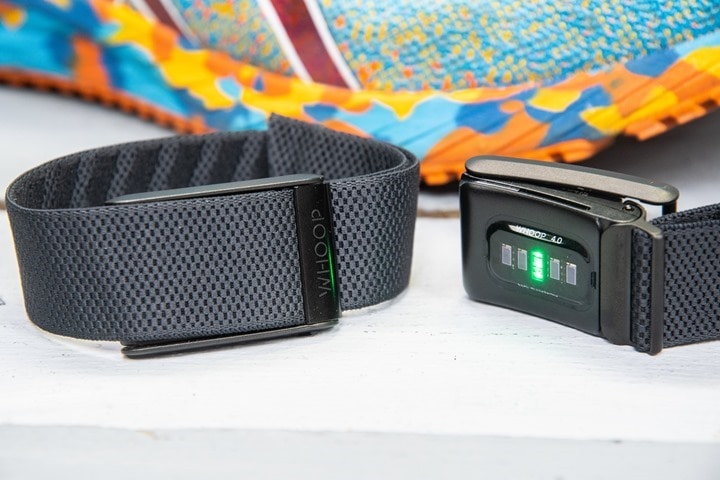

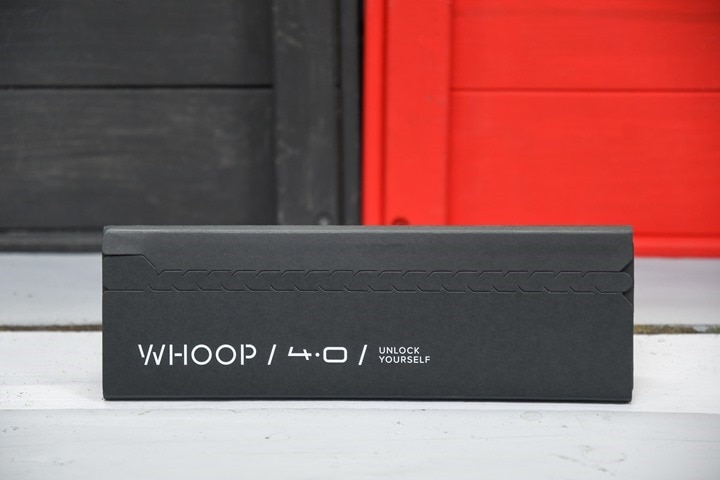
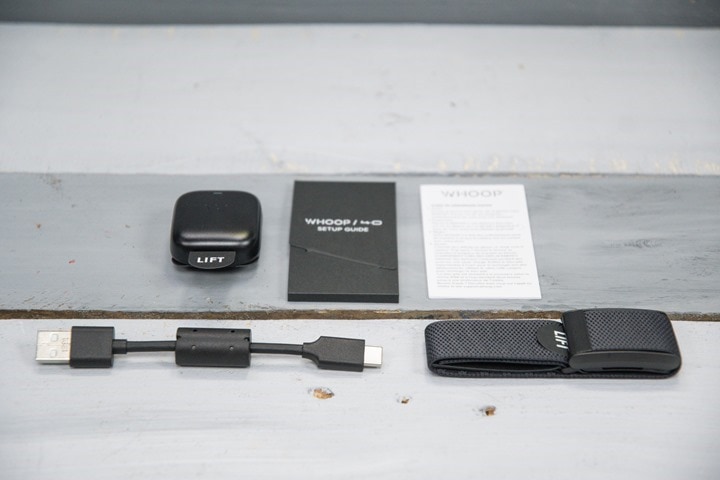
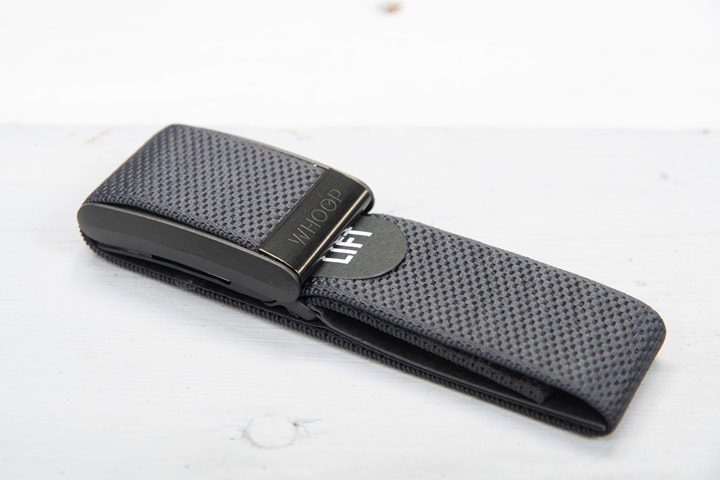
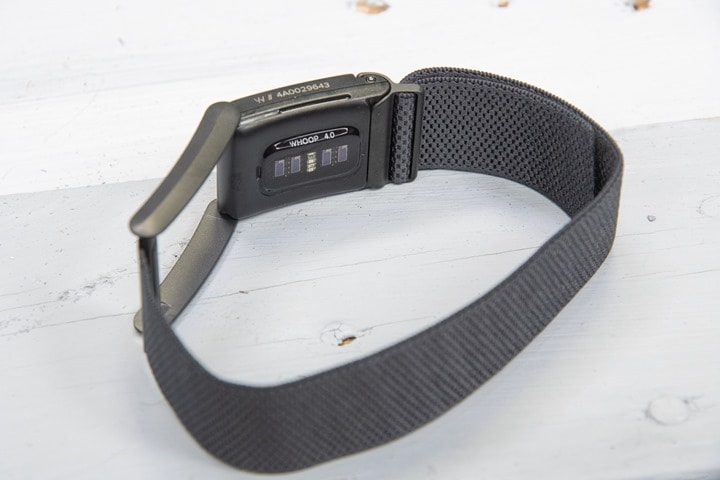
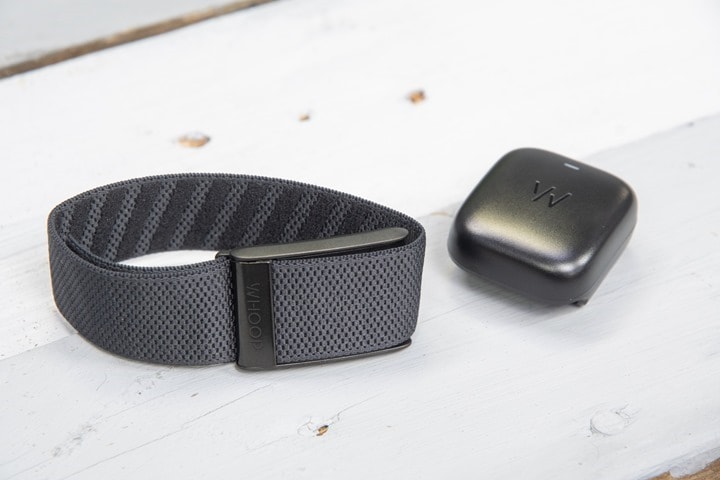

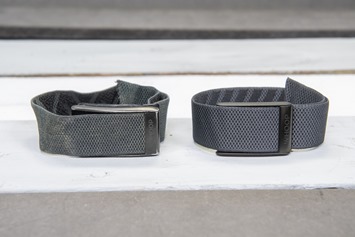
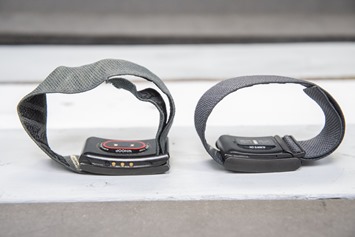
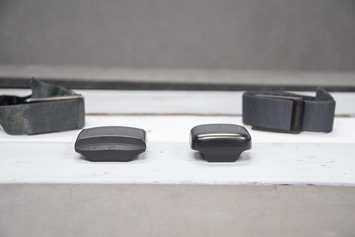
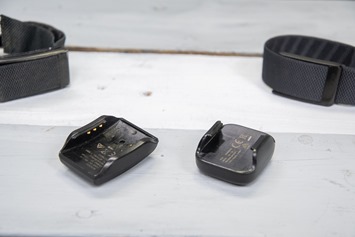
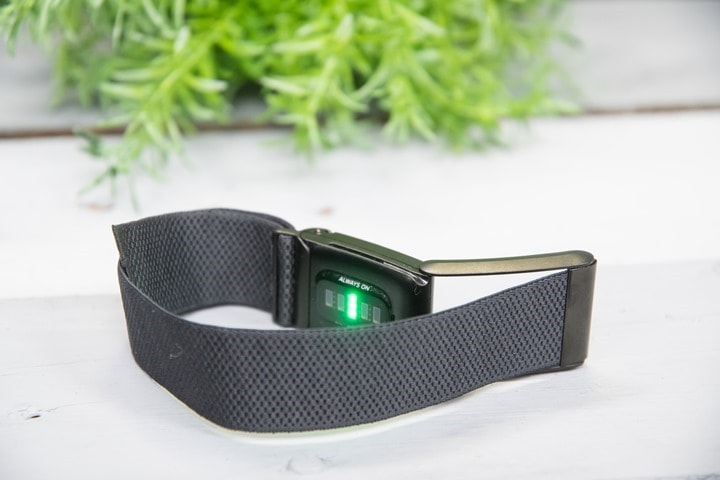

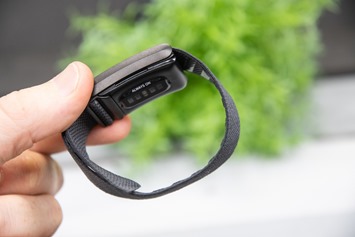
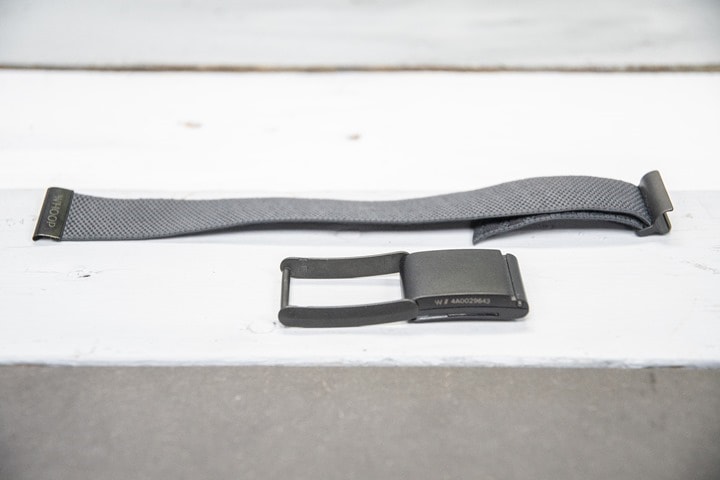
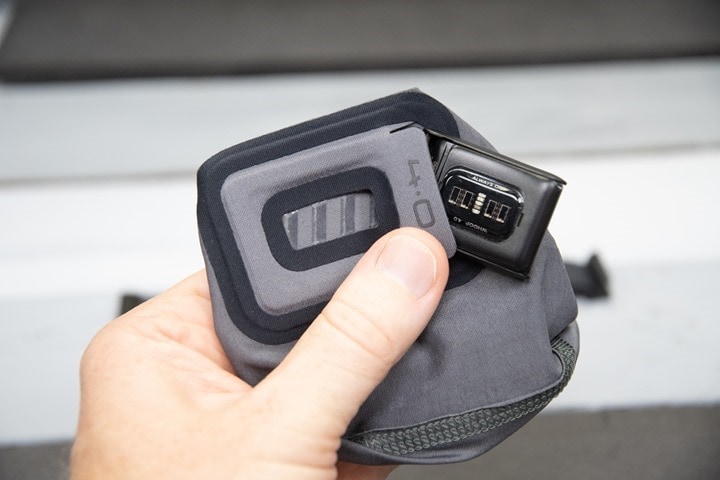
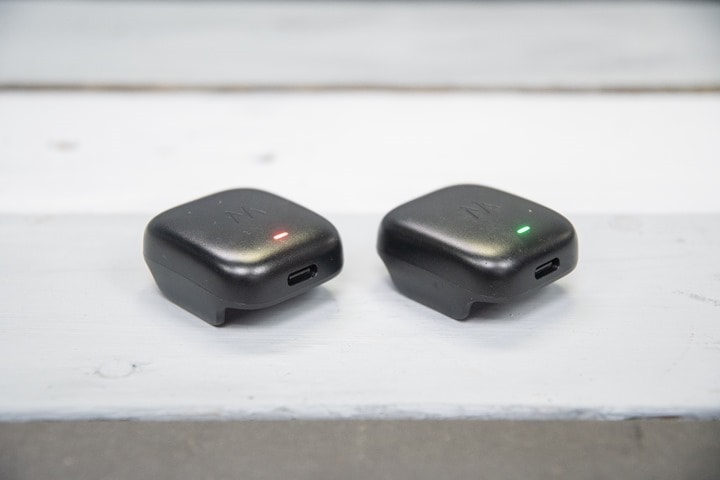

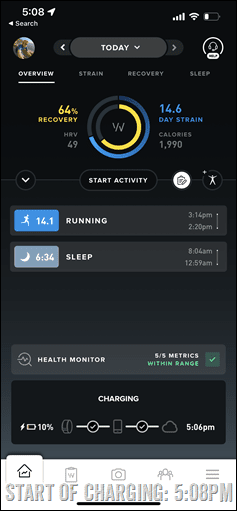
![clip_image001[16] clip_image001[16]](https://media.dcrainmaker.com/images/2021/11/clip_image00116_thumb-1.png)
![clip_image001[20] clip_image001[20]](https://media.dcrainmaker.com/images/2021/11/clip_image00120_thumb.png)
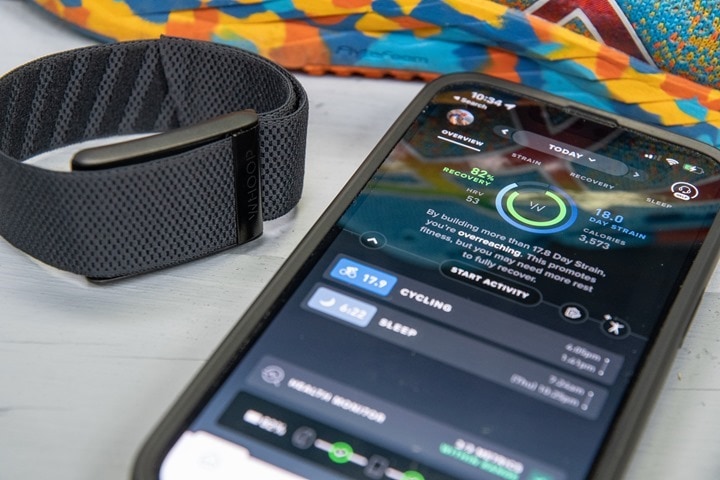
![clip_image001[25] clip_image001[25]](https://media.dcrainmaker.com/images/2021/11/clip_image00125_thumb-1.png)
![clip_image001[22] clip_image001[22]](https://media.dcrainmaker.com/images/2021/11/clip_image00122_thumb.png)
![clip_image001[27] clip_image001[27]](https://media.dcrainmaker.com/images/2021/11/clip_image00127_thumb-1.png)
![clip_image001[29] clip_image001[29]](https://media.dcrainmaker.com/images/2021/11/clip_image00129_thumb-1.png)
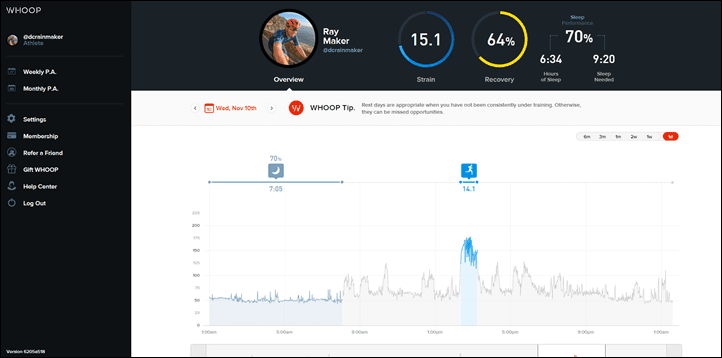


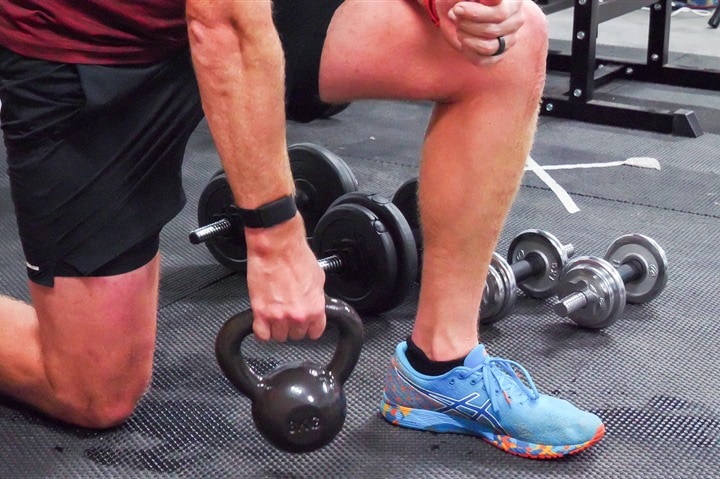
![clip_image001[31] clip_image001[31]](https://media.dcrainmaker.com/images/2021/11/clip_image00131_thumb-1.png)
![clip_image001[33] clip_image001[33]](https://media.dcrainmaker.com/images/2021/11/clip_image00133_thumb-1.png)
![clip_image001[35] clip_image001[35]](https://media.dcrainmaker.com/images/2021/11/clip_image00135_thumb-1.png)
![clip_image001[37] clip_image001[37]](https://media.dcrainmaker.com/images/2021/11/clip_image00137_thumb.png)
![clip_image001[47] clip_image001[47]](https://media.dcrainmaker.com/images/2021/11/clip_image00147_thumb.png)
![clip_image001[49] clip_image001[49]](https://media.dcrainmaker.com/images/2021/11/clip_image00149_thumb.png)
![clip_image001[45] clip_image001[45]](https://media.dcrainmaker.com/images/2021/11/clip_image00145_thumb.png)
![clip_image001[39] clip_image001[39]](https://media.dcrainmaker.com/images/2021/11/clip_image00139_thumb.png)
![clip_image001[43] clip_image001[43]](https://media.dcrainmaker.com/images/2021/11/clip_image00143_thumb.png)
![clip_image001[41] clip_image001[41]](https://media.dcrainmaker.com/images/2021/11/clip_image00141_thumb.png)
![clip_image001[51] clip_image001[51]](https://media.dcrainmaker.com/images/2021/11/clip_image00151_thumb.png)
![clip_image001[53] clip_image001[53]](https://media.dcrainmaker.com/images/2021/11/clip_image00153_thumb.png)
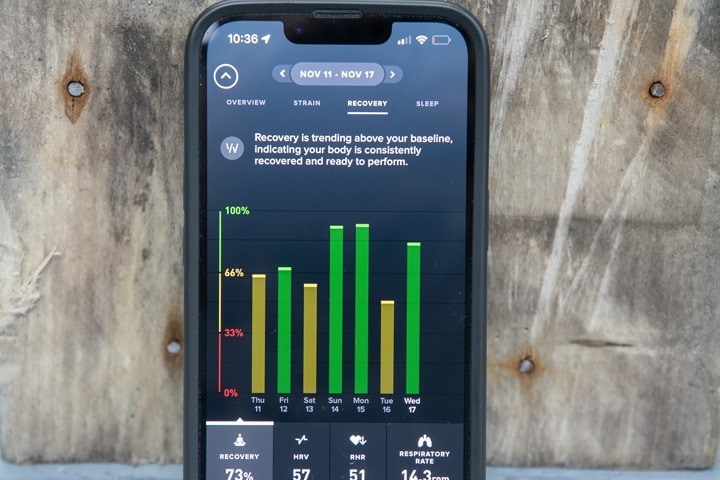
![clip_image001[55] clip_image001[55]](https://media.dcrainmaker.com/images/2021/11/clip_image00155_thumb.png)
![clip_image001[57] clip_image001[57]](https://media.dcrainmaker.com/images/2021/11/clip_image00157_thumb.png)
![clip_image001[59] clip_image001[59]](https://media.dcrainmaker.com/images/2021/11/clip_image00159_thumb.png)
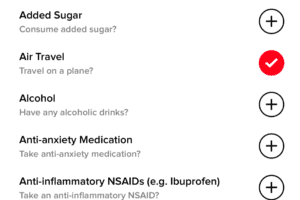
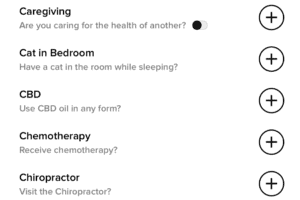

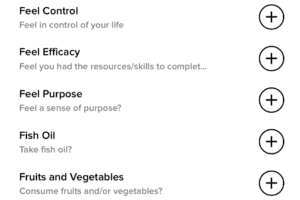
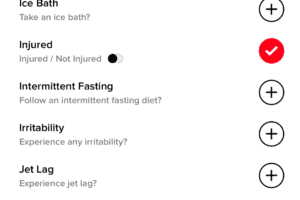
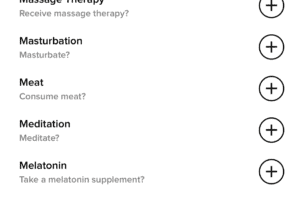
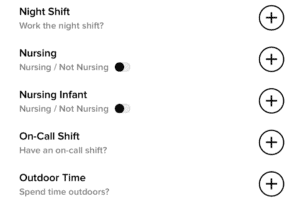
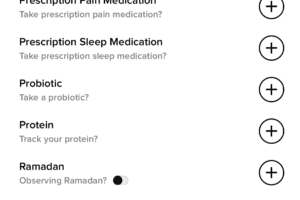
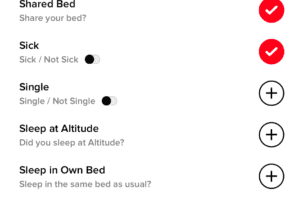
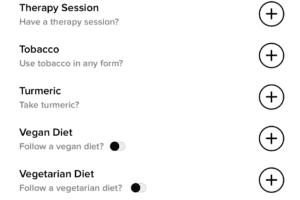
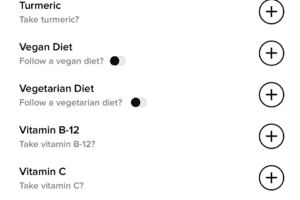
![clip_image001[67] clip_image001[67]](https://media.dcrainmaker.com/images/2021/11/clip_image00167_thumb.png)
![clip_image001[61] clip_image001[61]](https://media.dcrainmaker.com/images/2021/11/clip_image00161_thumb.png)
![clip_image001[63] clip_image001[63]](https://media.dcrainmaker.com/images/2021/11/clip_image00163_thumb.png)
![clip_image001[65] clip_image001[65]](https://media.dcrainmaker.com/images/2021/11/clip_image00165_thumb.png)
![clip_image001[71] clip_image001[71]](https://media.dcrainmaker.com/images/2021/11/clip_image00171_thumb.png)
![clip_image001[73] clip_image001[73]](https://media.dcrainmaker.com/images/2021/11/clip_image00173_thumb.png)
![clip_image001[75] clip_image001[75]](https://media.dcrainmaker.com/images/2021/11/clip_image00175_thumb.png)
![clip_image001[79] clip_image001[79]](https://media.dcrainmaker.com/images/2021/11/clip_image00179_thumb.png)
![clip_image001[77] clip_image001[77]](https://media.dcrainmaker.com/images/2021/11/clip_image00177_thumb.png)
![clip_image001[81] clip_image001[81]](https://media.dcrainmaker.com/images/2021/11/clip_image00181_thumb.png)
![clip_image001[83] clip_image001[83]](https://media.dcrainmaker.com/images/2021/11/clip_image00183_thumb.png)
![clip_image001[85] clip_image001[85]](https://media.dcrainmaker.com/images/2021/11/clip_image00185_thumb.png)
![clip_image001[87] clip_image001[87]](https://media.dcrainmaker.com/images/2021/11/clip_image00187_thumb.png)
![clip_image001[6] clip_image001[6]](https://media.dcrainmaker.com/images/2021/11/clip_image0016_thumb.jpg)
![clip_image001[93] clip_image001[93]](https://media.dcrainmaker.com/images/2021/11/clip_image00193_thumb.png)
![clip_image001[95] clip_image001[95]](https://media.dcrainmaker.com/images/2021/11/clip_image00195_thumb.png)
![clip_image001[103] clip_image001[103]](https://media.dcrainmaker.com/images/2021/11/clip_image001103_thumb.png)
![clip_image001[99] clip_image001[99]](https://media.dcrainmaker.com/images/2021/11/clip_image00199_thumb.png)
![clip_image001[97] clip_image001[97]](https://media.dcrainmaker.com/images/2021/11/clip_image00197_thumb.png)
![clip_image001[105] clip_image001[105]](https://media.dcrainmaker.com/images/2021/11/clip_image001105_thumb.png)
![clip_image001[107] clip_image001[107]](https://media.dcrainmaker.com/images/2021/11/clip_image001107_thumb.png)
![clip_image001[109] clip_image001[109]](https://media.dcrainmaker.com/images/2021/11/clip_image001109_thumb.png)
![clip_image001[111] clip_image001[111]](https://media.dcrainmaker.com/images/2021/11/clip_image001111_thumb.png)
![clip_image001[113] clip_image001[113]](https://media.dcrainmaker.com/images/2021/11/clip_image001113_thumb.png)
![clip_image001[115] clip_image001[115]](https://media.dcrainmaker.com/images/2021/11/clip_image001115_thumb.png)
![clip_image001[119] clip_image001[119]](https://media.dcrainmaker.com/images/2021/11/clip_image001119_thumb.png)
![clip_image001[117] clip_image001[117]](https://media.dcrainmaker.com/images/2021/11/clip_image001117_thumb.png)
![clip_image001[121] clip_image001[121]](https://media.dcrainmaker.com/images/2021/11/clip_image001121_thumb.png)
![clip_image001[123] clip_image001[123]](https://media.dcrainmaker.com/images/2021/11/clip_image001123_thumb.png)
![clip_image001[125] clip_image001[125]](https://media.dcrainmaker.com/images/2021/11/clip_image001125_thumb.png)
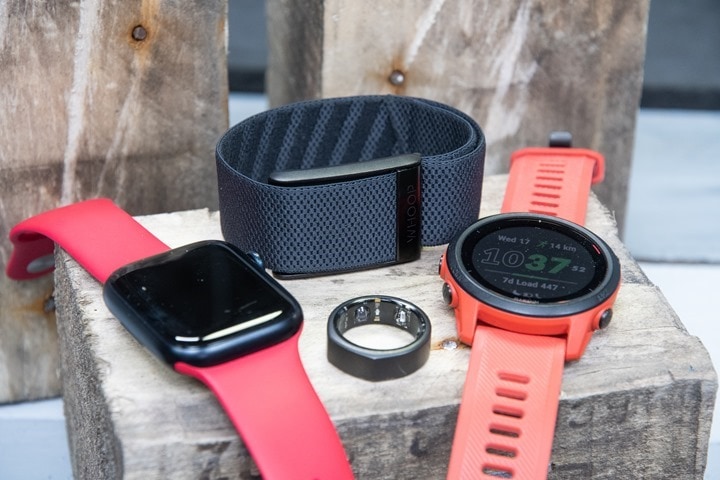


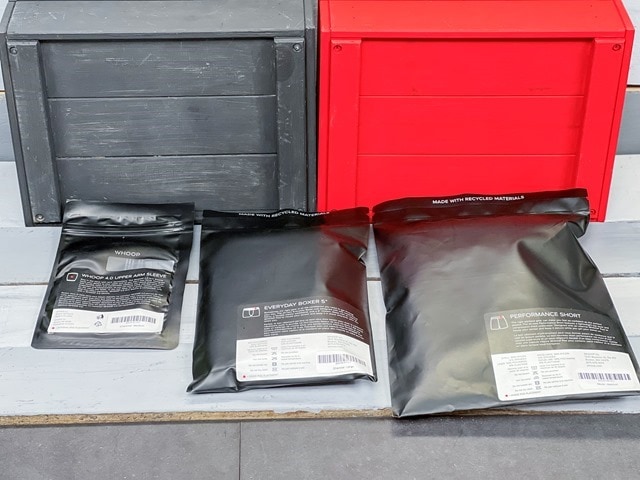

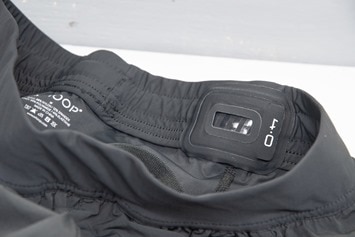
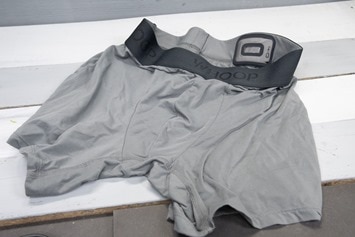
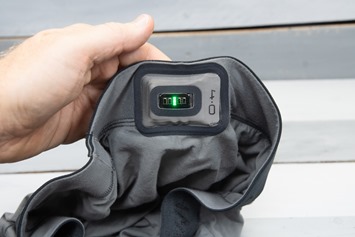
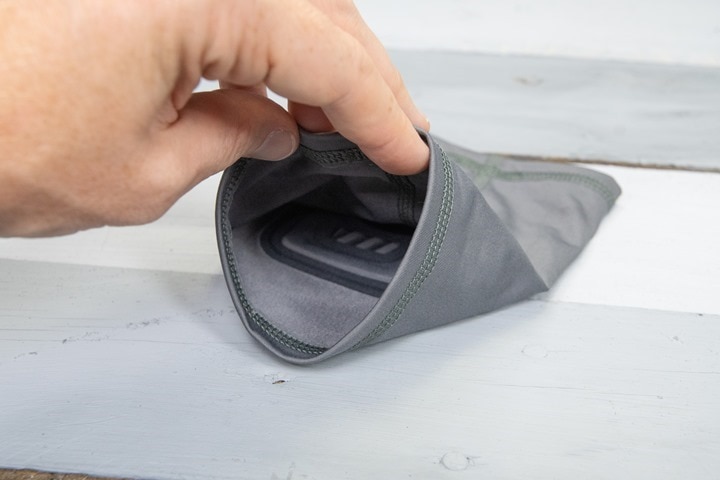
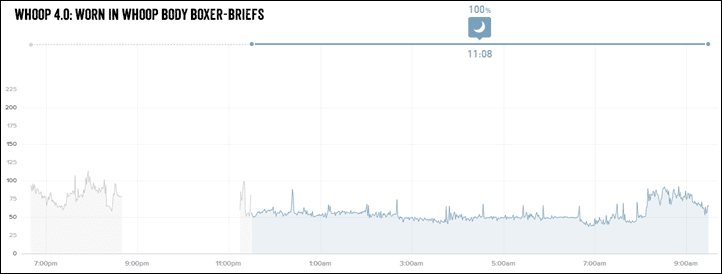

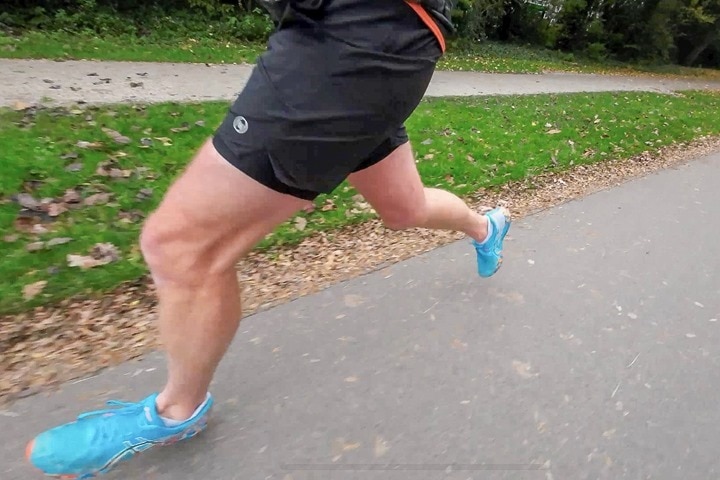
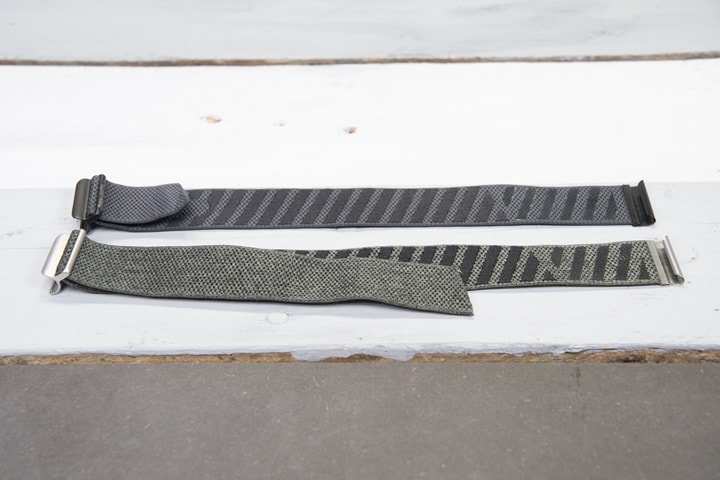
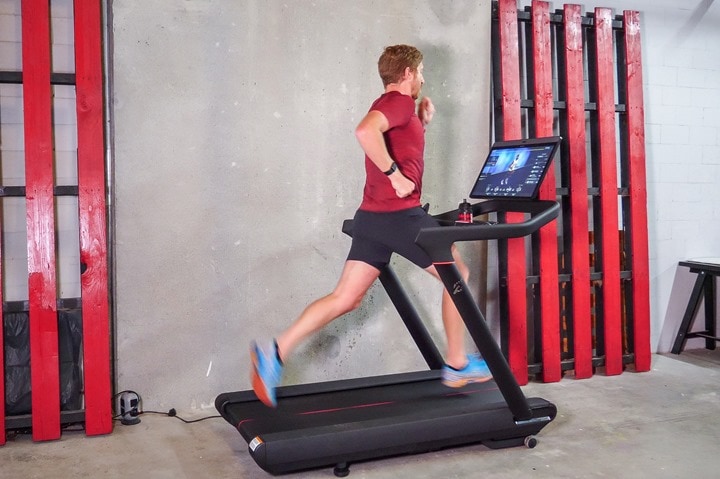




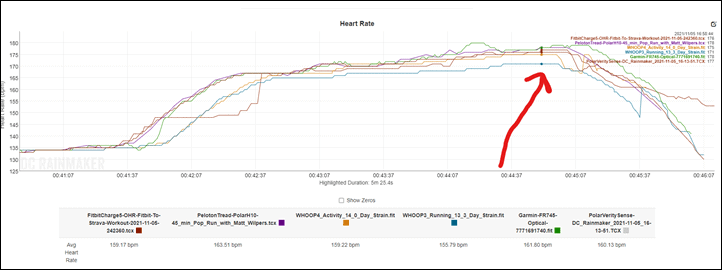






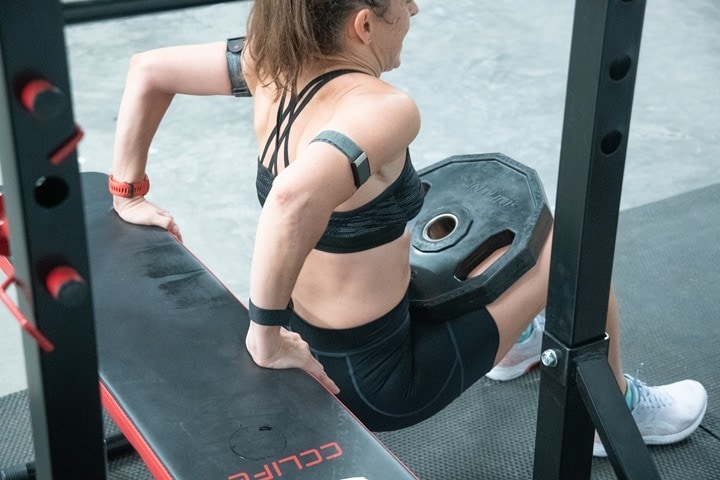

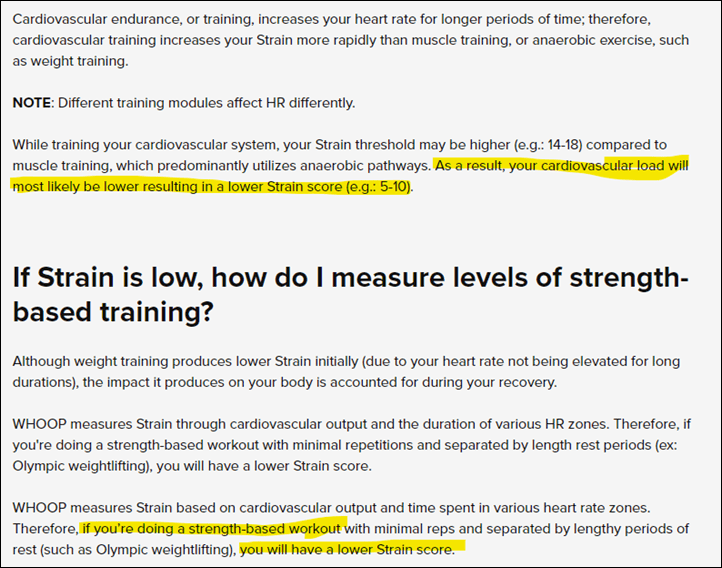
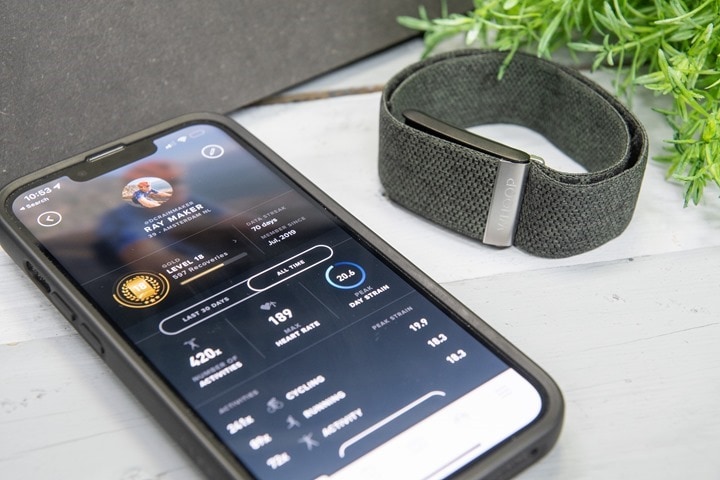

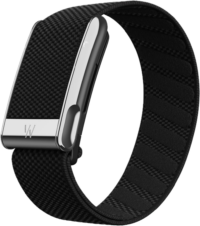





















You mention that as far as recovery goes, whoop was the outlier when comparing ecovery scores presented by numerous devices – what other devices were they and would you suggest them over whoop?
They’re all listed in the ‘Sleep Comparisons’ section in the table: link to dcrainmaker.com
But in short, during this timeperiod, they included: Garmin FR745, Fitbit Charge 5, Oura V3, and the Apple Watch Series 7 using the Athlytic app.
Hey DC, The table is of the readiness chart is super interesting to me. I see all of the data besides athlytic via apple watch? I have an SE and am considering subscribing to athlytic. Is that data in a chart somewhere or in a few words did the estimates seem to track decently well? Looks like they pull in HRV, exertion, and sleep data.
Thanks Ray for another great, comprehensive review. I continue to wonder why people continue to buy and subscribe to Whoop, given that there still are accuracy issues and much cheaper alternatives – great marketing I guess.
Thanks for the review Ray! Sounds like you had better accuracy than me on the bicep vs the Polar H10 for cycling. Also interesting to read your findings on Recovery score vs Body Battery. Anecdotally, since getting a Fenix 6 I feel like it’s far closer to how I “feel” in the morning than the Whoop often is. I’m really wrestling with whether to give Whoop another 18 months to see how they build on the new hardware in the 4.0 with software improvements/insights.
One suggestion – I find the journal to be the main reason I’m still subscribing to Whoop after 1.5yrs. Worth adding some screenshots of the monthly report? I feel like that’s a huge value add and their main USP.
I found the most interesting difference to be the fact that Body Battery actually rises during the day if you are at rest. I believe that is reflecting reality as if I had a hard workout the day before and even a rough night sleep, a calm day at work with mostly sitting definitely recharges me somewhat.
Whoop’s for only seems to move in one direction
In regards to Whoop’s recovery score, if your HRV is elevated it is going to report a green recovery. What it doesn’t take into account is that high spikes in HRV can mean hyper-recovery, which is where your body is forcing itself to recover and that it really isn’t recovered. If you pay attention to your elevated HRV and not feeling good, you are probably in hyper-recovery.
I did not know this. I do know that I abandoned Whoop because it would routinely say that I was well recovered on days that I was absolutely wiped out from cumulative efforts (e.g. a cycling vacation week that absolutely pushed me to the limit). I have always assumed that the HRV measurement was wrong and that was the problem.
In your case you probably were experiencing hyper-recovery. The problem is that not every time you have a huge spike in HRV means you are in hyper-recovery. It’s a subjective analysis and Whoop is unable to determine the difference on its HRV readings alone.
Daily HRV should be compared with a moving average of HRV. If below or above your typical range, then you should pay attention to other metrics (HRV coefficient of variation and resting HR for example), to understand if you could be overreaching and needing a break or are adapting well to training.
Whoop doesn’t look at this, but some HRV software apps already do a good job of capturing the more subtler side of HRV metrics.
Two year whoop 3.0 user here, I have had better luck with the correlation between perceived and recovery and Whoop’s opinion. But I don’t nearly as much international flying as you seem too. I have theory about Whoop’s scores that sometimes it doesn’t massively degrade your recovery score from one bad nights sleep. I don’t know if this reflects your bodies’s actual ability to deal with one bad night, or is just an artifact of their algorithm. FWIW I find the 3.0s data very valuable over time, and the sleep coaching really helps me shut off the electronics and go to bed when I should. And I have signed up for a 4.0.
Ray, have you looked at their heart rate variability (HRV) calculation? Their recovery score is not simply based on strain and sleep, but is very significantly a function of the measured HRV. In my experience with Whoop 3.0, as much as they had real problems measuring heart rate, their HRV measurements were a real mess for me. This made the recovery scores essentially useless. Since the recovery score is their #1 big output, failing to look at HRV accuracy somewhat limits the usefulness of this review.
There were many times when it seemed to have an accurate measure of my cumulative strain and my sleep, but the HRV scores were just crazy leading to terrible recovery metrics. There were far too many cases of it telling me I had a 90+ recovery score the morning after a crazy hard cycling vacation week (e.g. 5 days in a row of 100+ miles a day for a 57 year old). In some cases, I would wake up for 20-30 minutes, then go back to sleep for another 2 hours. In this case, whoop would calculate my score then recalculate my score. Both would show up in Training peaks. It was not infrequent that my recovery score from after the second sleep would be materially lower than the first score.
Based on my experience through 2020 before I abandoned Whoop, Whoop’s recovery score was tremendously sensitive to their calculated heartrate variability near the end of the sleep cycle. Heartrate variability is harder to calculate than simple heartrate. Additionally, it appeared that the sample time for HRV was very brief leading to significant sample variability. This led to very weird results when I woke up early and was up for 20-30 minutes before getting around 2 more hours of sleep. Many times, my recovery score would be calculated then recalculated. Frequently, my recovery score would be materially lower after the extra 2 hours of sleep.
I have experienced this too (additional sleep causing a total change (often reduction) in recovery score) but I think it’s been greatly improved by their new algorithm that looks at HRV throughout the whole night instead of just one spot check right before waking
Read the review about HRV measuring Ken, Ray specifically mentions Whoop has changed the algorithm for this, and now averages all the readings for the night, instead of relying in one single reading.
Still I think they are missing some of the more complex aspects of HRV, where high doesn’t necessarily mean always good.
Making kids (including practicing). First laugh of the day Ray :-D
Is the Whoop 4.0 super comfortable compared to larger smart watches like an Apple Watch?
I generally hate wearing any kind of watch in bed, so I’m looking for the most comfortable option possible or I won’t wear it and the device will be rendered pretty useless.
Anecdotally, people seem to be saying the the new smaller Whoop 4 and superknit band are really comfortable.
Have been using WHOOP since 2018, on and off sometimes. Both 3.0 and 4.0 are extremely comfortable to wear. You can hardly feel the strap. Definitely beats smartwatches for me.
Ray, thanks so much. Very informative and appreciated. I am currently studying the Fit Bit Charge Recovery Score with my Garmin 745 Body Battery and my Oura Ring 2 Readiness score. Oura Gen 3 arrives Friday. Whoop 4.0- God knows when.
Thanks for keeping me up hours after my normal sack time.😉🏃
The other thing about the Whoop 3.o is to look at the last hour or two of your sleeping heart rate trace, if it is low and flat that is a very good sign. The algorithm should probably look at that more.
Hi Ray,
a general question: for how many platforms have you signed in and pay a monthly/yearly fee? Or did they offer you a free account?
Too many. At present, off the top of my head I pay for:
– Whoop
– Peloton
– TrainerRoad
– Zwift
– Xert
– TrainingPeaks (actually, I’m under a coached account, so he pays)
– Strava
– FulGaz
– RGT
I’m sure I pay for more, but those are the ones that come to mind quickly that I see invoices/receipts for in my e-mail each month. Though, I did at least convert my Whoop one to a 6-month membership to save slightly there.
Obviously, some of these platforms I use more than others. I somewhat rarely use FulGaz/RGT/Xert, except for posts. I like them, but there’s only so many days in the week, and I tend to do most of my training on TrainerRoad/Peloton/Zwift.
As you practically live near cyclinglab you might want to add link to join.cc to your list to test and pay for ;) (its a bit like xert)
For what it’s worth, Will mentioned in an AMA in app that they do plan to release an API. For now though, you can get at their internal API using your login info. I built a package in python to make it easier to use in case you’re interested link to github.com
You win the internet! Not sure if or when I’d use it, but the fact somebody did is awesome!
A new meaning to boxer strain 😂 for the bargain of 30 dollars a month.
Honestly most of us who have 24/7 sleep and heart rate monitors don’t really pay much attention to them. I think how you feel has more relevance. Also if the sun us shining are you really going to take a day off because your strain lebel is too high.
Maybe at elite level yes but for the average fitness geek no.
“Anyways, if you want to see your entire day’s heart rate, you’ll need to use the Whoop website for that”
If you rotate your phone 90 degrees it shows your HR graph
Good catch. I had forgotten about that, because it’s always so finicky (seems super slower when I try and go between days). But just updated!
Thanks for the review. Still waiting for Oura V3 review. Any ETA?
I had mentally calendared in (this) Friday. But my time allotment on this Whoop review went a bit long, and now I’m behind the ball on things I need to do for today and yesterday (including the YouTube video review of the Whoop, plus some other unannounced stuff).
So not entirely sure I’ll get the Oura ring out on Friday, but might instead shift it till Monday. On the bright side, it’s a fair bit easier review since half the new functionality is missing.
Would you recommend the Oura V3 over the Whoop 4.0?
That would be great. As an satisfied owner of Oura V2, I have time to order it (with the free subscription) until end of november. I’m like 90% decide to order it but still waiting for the review. It’s a pity that half of the functionality is not there yet. What a bad habit in the industry these days. On the other side I’m mostly interested in sleep tracking which should be working already. I ‘ve read some articles about the new sleep staging algorithm which should especially help with REM detection. So I’m curious.
Hi Ray,
great review (again), the one I was waiting for. I cancelled my whoop order already and your review confirms my expectations. Upgraded my 735xt to a 745 and its great for activities and I guess equally as good as the whoop for sleep/strain (body battery) tracking.
Anyhow, compliments on another well writen review.
Kr;.
i have been using scosche weight training bands for years and now the second wahoo tickr fit (the first wahoo broke one of the bars for the wristband).both are quite inaccurate and often show for minutes around 20-40 bmp too low values. wear them on the upper forearm just below the elbow joint.
I am during strength training the chest straps simply uncomfortable although they are much more accurate (wahoo tick and polar run). what really annoys me is that neither polar nor wahoo offer a comfortable to wear shirt in which (replaceable) electrodes are integrated and to which you can then simply plug the pod of the tickr or polar run. that would be for weight training or crossfit the perfect mix of wearing comfort and accuracy.
cheers
tom
I have also had issues with immediate HR on Wahoo TICKRs – often takes time to match reality.
For me, wetting the contact points when starting a workout fixes every time.
Oddly I don’t have to moisten my Garmin HRM bands – they work every time.
Even with the minor annoyance, still prefer the TICKR due to the stretchy band being more comfortable.
I like the idea of something unobtrusive that doesn’t disturb my sleep. So Whoop or a ring appeal over a watch for sleep tracking but that’s as far as it goes. Even with the up-front discounts it is still about $300 a year. Not a chance.
Better value than Oura by a long way and reading your reviews more accurate than an Oura too. But after 2 years these costs are much more than a great watch and a Whoop would be in addition to a watch in my case. Needs to be less than $100 a year for me to even begin to think about it. Even then I’d probably pay more for a watch than pay a cheaper subscription for this. Nice idea though.
No pics of you modelling the boxer briefs? Am disappointed… 🤣
Their recovery algorithm is probably based on tons of garbage data given your prior review of the 3.0 sensor. I would guess they will be able to improve it a lot with accurate data. What’s sort of funny about this is they managed to bootstrap themselves with what was essentially a fake service. But hey – that’s how entrepreneurs get going!
I have 2 question about the nap function. I hate how it takes minutes off the next night’s sleep. As I understand it, if I nap for an hour then Whoop thinks I need an hour’s less sleep that night. Also, there is th eproblem with false naps being recorded.
The 2 questions
1. Can I turn off nap recording?
2. If I delete a nap after it is recorded will I get that time back for the night’s sleep?
1) I don’t think naps are recorded automatically. At least, I don’t remember them ever recorded automatically for me and I’ve used WHOOP for years
2) You can always delete a nap, in which case it doesn’t count toward your sleep
However, you should realize one thing: WHOOP calculates your sleep need based on baseline (about 7.5 hours), estimated awake time (i.e. average time to fall asleep, etc.), extra time due to strain (can be in excess of an hour on heavy training days), and finally sleep debt. So, if you are training hard, say, for a marathon, your sleep requirements will be substantial. Ray alluded to that. Naps become the only way to bring them down.
Interesting, mine are definitely automatically recorded. I don’t see any obvious place to turn them off though (perhaps it’s there somewhere).
As Nick noted, you can certainly delete them (as well as edit sleep, which is interesting that you can edit false sleep, but not false HR).
Ray – do you foresee any of the reputable companies having their own version of a device similar to the Whoop strap, in the future? Something that is worn 24/7 but doesn’t necessarily function as a watch? Love what Garmin and Polar can do behind the scenes, and find their platforms way more valuable than Whoop’s, but already wear an AW and as you know, for day-to-day, as an Apple user, it works really well. It falls short, however, on the “body battery” functions. Therefore, unless Apple quickly incorporates, would hope to have that kind of feature in a non-watch type of wearable from Garmin or Polar.
I’m sure they have no plans to do this, but I wish whoop would give up on the hardware and offer their subscription service as an app for AW. Or maybe offer that as a separate service. I’m sick of wearing 2 things.
Would buy a Garmin equivalent of Whoop so long as it sync’s with everything else using their TrueUp service. I have some lovely mechanical watches that I like to wear and don’t want to double up with a Fenix or AW.
I had the Whoop 3.0 and it was garbage. The first week I had it, it registered about 50 bpm higher than my hardest workout when I was mowing the grass – I suspect that’s because my mower has a nicked blade so it vibrates a lot. Like you said, there’s no way to cut it out and Whoop made my heart rate zones completely wrong. During my main activity (flat water kayaking) the heart rates displayed where 10-20 bpm too high compared to my chest strap.I ended up putting it in a drawer while I still had 6 months left on the pre-paid subscription.
Frankly, the recovery scores were less reliable than the Garmin Body Battery in terms of matching up with how I really felt.
Ray, that drop-out in HR when you were wearing shorts during sleep might have been due to a bug that I’ve seen in my 4.0 too (hopefully, it’s been fixed in the latest firmware update).
Basically, the sensor would erroneously determine it’s off-wrist and shut off LEDs. Happened to me twice over the past 8-10 days I had the new band. One time I caught it quickly as it was right before a workout and I was actually trying to connect. The second time I lost half a day since I wasn’t really looking.
Yeah, I saw that one as well. We’ll have to see. I’ll give it another whirl tonight, since the boxers are back out of the wash.
That said, I saw two time dropouts last night on my wrist unit (one for 30 mins, and one for 20 mins, in the middle of the night), which is the first time I’ve seen that (first night with yesterday’s firmware).
I’ve had a Whoop 3.0 for year (I get my 4.0 tomorrow). I’ve been pretty happy with the heart rate accuracy.
On recovery/HRV/sleep interaction I have been involuntarily collecting some interesting data for the past year. Because of a medical issue (and advancing age … ) I rarely sleep through the night without at least one and often more periods of waking up and often getting out bed for a few minutes. So, most mornings I wake up to more than one Whoop “sleep” period and accompanying data. Its not the fault of the Whoop, I really am awake and it accurately recognizes that if its more than a short time. But, the Whoop does go on to record my sleep cumulatively so each of these reports is cumulative and syncs with TrainingPeaks so I can see all of them. My HRV score and recovery score is always better for the full night data than the intermediate data and if there a multiple reports, the scores get better as the night goes on. So whatever else the algorithm is doing, as I get more sleep it says I am getting more recovered.
Your review mentions the post-workout RPE and Intensity questions. It’s worth noting that the Android version of the app doesn’t ask those questions. I only learned this a few months ago when my wife, an iPhone user, joined and I, an Android user was helping her get set up. One wonders what other differences, or in this case, omissions, exist between the two phone OSs.
I understand there can sometimes be differences in user experience based on the platform the app is written for but it’s baffling to me that something basic like the questions Whoop asks aren’t consistent from iPhone to Android.
Another frustration with Whoop: Where does that data go? There’s no way to search for workouts of a certain strain or RPE.
Personally I think these subscriptions are a big rip off, I bought a garmin 745 a few months ago, and I’ve got all the info I need there for sleep tracking,ooenwater swimming, cycling etc. A whoop subscription equates to getting my garmin 745 and throwing it in tbe bin after two years. Hopefully garmin don’t go down the fitbit, whoop etc route. I’m sure there are nuggets of info in whoop that don’t come free with garnin but whatever they are I don’t feel the need for them.
I use the recovery scores as a 3-4 day rolling average and not how I should feel on the day. If it’s green for 3 days then yellow or red on the day of a hard workout or race I still do the workout or race and if it doesn’t go well then I can weigh that against the recovery score from that morning.
Little typo “Here’s what’s new in Whoop 3.0 versus Whoop 4.0:”
For me the fact that recovery score ignores the impact of previous strain makes this something I’m unlikely to purchase. I can’t see how they are not very very connected.
I’ve always found Garmin’s body battery to be a fair reflection of how I feel.
Thanks!
There are different approaches to recovery. Some devices try to quantify the strain you might be able to handle today based on accumulates fatigue, sleep, HRV, etc. Others just say “today you are good to do whatever it is you have on your training plan” but it’s up to you do decide what that is (it might even be a rest day, if that’s what your plan has in store for you).
Some people like guidance (great recovery, so you should do interval training, go all out), others just want to have a heads up regarding possible overtraining or low recovery, otherwise they’ll stick to the plan, it’s not the recovery value that determines the effort that day.
Awesome job. Holy cow the data that went into this! Excellent excellent work. Thank you!
Thanks Hunter!
I don’t usually like picking up on typos & grammar. But using the word “spastic” in that way, really? Maybe this is an English thing, but that playground insult really is better left in the 1980’s.
Hmm, I’ve never heard issues with that, but either way – switched out. Cheers!
Ray,
Have you looked into doing a comparison of the Whoop strap to the Amazon Halo Band? I looked back on your site and though you did cover the announcement of the Halo Band, you didn’t post up a review. Though I’m sure the Halo is low on your list, it’d be cool to see a comparison of the only two band options on the market (aside from Biostrap, that is).
I recently picked up the Halo Band and am really enjoying it. I have been a Polar user for years, but a recent visit to the Ortho has side-lined my running (at 32yrs of age) and I’ve gone to cycling only for my cardio and I have found the workouts which the Halo app provides to be highly useful in supporting my cycling.
I opted for the Halo Band as I can’t justify paying Whoop so much just to get access to my data and I’m sure there are others around like myself who would consider the Halo as a viable option.
Thanks for the time!
I don’t know if Halo has improved since it was first released, but I got one when it first came out hoping it might be basically a cheaper whoop, but I was really disappointed and ended up returning it. They’re really not comparable imo.
ARM,
They may not be comparable (perhaps more akin to a Fitbit) and they are for sure not aimed at the same consumer. If you’re looking for a device that will measure HRV in the same way a Polar, Garmin, or Whoop product may, I can see why someone would be disappointed with the Halo as Amazon’s product is indeed aimed at the most novice of people involved in health/wellness.
As someone who is already highly motivated to stay fit, perhaps perplexingly I find the Halo to be a great fit for me as I like the workouts the Halo platform offers. They are much like Apple’s FItness+ videos, though less polished as of now. If Apple came out with a fabric band/screen-less option, I’m sure I would choose it! For now though, at $4/month, the Halo is getting the job done for me.
I have a Halo, but haven’t spent much time with it since launch. I might circle back again, though might also wait for the newer one to drop here soon.
Ray,
Thanks as always 👍
I get a message saying there is a firmware update available for my whoop 4. But when I click the update button I get a message saying there are no new updates. Since I know an update came out yesterday I wonder if my Whoop has been updated.
My firmware says 41.8.0.14 and then 17.0.4.0
I contacted support and was bumped up to a higher tech level but I have not heard back.
Can someone tell me if I have the latest firmware? If not has anyone else had this problem?
You have the latest
The latest is 41.8.0.23 then 17.0.4.0. Whoop sends these out in waves to lesson the load on their servers.
Seems to me that an Apple Watch app could provide similar insight. Have you ran across one that gives accurate readiness/body battery/strain type scores? I recently downloaded the Welltory app and it seem promising but not sure if I should upgrade it or if there are better AW apps out there.
Yup, Athlytic is a pretty good app in this space, for Apple Watch.
Thanks Ralph
You’re welcome!
Why wont Whoop allow the use of other heart rate monitors? doesnt make sense. And why wont they make a chest strap?
Probably the same reason they don’t integrate with Apple Health. Apparently they think integration with other it’s like an admission of weakness, go figure.
Ray regarding the sleep estimation Whoop gives you every day, do you think it’s related to sleep debt you have accumulated in the past? Most people need between 7-8 hours of sleep, but if you regularly sleep less than needed, than effectively you start to need to more to compensate past debt. Not sure if this is something Whoop is taking into account.
Regarding the GPS for drawing the track, this is connected GPS from your phone right? Whoop doesn’t have a GPS chip in the band right?
I’d agree with that, if my Whoop testing window was only 3 weeks, and one of those was with jetlag. However, one of Whoop’s core things is that if figures out you, over time. So in my case, I’m at almost two years with it, it should have figured me out by now (since all the other wearables I’m testing have managed to, in far less time, such as Oura in just a few days, optimized by a few weeks).
Whoop is also more heavily focused on the HRV value than others, rather than sleep duration. So total sleep duration *AT MOST* will only account for 10% of your score. Meaning, it won’t move the needle too much.
And correct for GPS, it needs the app/phone connected. That’s a good point I’ll add in. Somewhat interestingly/relatedly, Oura V3 actually cleverly enables GPS behind the scenes when it auto-detects a workout (and it does so scary quick). Thus, you have GPS tracks for everything. Sadly of course, you can’t do anything with that, since they don’t support (yet) exporting to anywhere. Sigh…
I was thinking more along the line of you having to sleep 10 hours for 2 days straight for example, to clear up your sleep debt from the past 7 days. Only after paying that debt would you start seeing more normal sleep hours suggestions (7-8 hours).
Suggestion: test the Rise app (iOS only), free trial is enough to understand what’s your sleep debt based on historical data.
Hey Ray, great review as per…
Loving you rocking those particular Asics Noosa. I’m so glad to see I’m not the only one with the worst possible taste in colourways!
People literally gag when I wear those puppies to the gym!! Very pleased to know I am not alone… kudos!
Haha… my wife was ordering my shoe replacements and was like “They’re out the usual colors, but they have these ones…not sure you’re gonna like them.”, to which I said “Order all the pairs!” I love them!
Hi there just wondering if you’ve ever tried wearing a wristband (the normal sports stretchy ones) while working out that covers the whoop strap? That’s what I consistently do while playing tennis and I find the readings to be much more accurate. Therefore I also wear it while running and working out in the gym.
Not a wrist band per se, but the same effect – which is a longsleeve. In the case of optical sensors, this serves to get rid of outside light, which improves accuracy. It can also, theoretically improve tightness, but honestly one can just tighten their band/watch for that. ;)
In any event, I didn’t see any difference between light and no-light. For example, in Florida I wrote it in the sun (bright Florida sun), versus here I wore it in daylight (lesser brightness), and indoors in a dark shed/cave (cycling/treadmill), and no difference.
With Whoop 4.0, the sport accuracy was generally quite good for me, except upper body. The other except being fast short-duration intervals (e.g. ~30s and under). In which case it’s less about light, and more just about their algorithm being overly cautious.
Genuinely interesting reading through the comments about how the whoop recovery score correlates, or doesn’t, with how one actually feels. I have the impression that commentators are thus taking perception of feeling as the “gold standard” of recovery? If so, why have whoop, if not, does that mean if your whoop recovery score says good to go despite you feeling like death warmed up, you still try and crack out that anaerobic capacity workout? Or conversely have a day off despite feeling great and it’s a rare dry sunny day outside? If comparing to feel, why not just use feel?
Yup, it’s totally valid.
I think recovery scores (in theory) can be useful for longer-term trending, and to look back at data and see the impacts of training load – and to try and put all that in context. Certainly, a daily diary can do some of that, but if we get to more slight changes (e.g. 55% vs 62%), then in theory, I think a computer can do a better job of getting a more complete score.
But ultimately, those have to at least be roughly accurate to start trending – or at least consistent.
@Fastas
ha ha. Exactly so.
Correlation is a good word to use when talking about recovery. What exactly is being correlated with what? & what might affect either.
I think the answer boils down to “waking readiness” and the rest is guff.
just my 2c
Aspects like the journaling are probably going to show up in more ecosystems over time in order to better explain gaps between measurable HRV and perception of readiness. Caffeine, B12, and sugar all substantial impact perceived energy level and whether fatigue signals are registered correctly. They certainly do also impact quality of sleep for many people which makes the feedback loop longer. Difficulty there is tracking those things at a sufficient level of detail without being so irritating to the user that they give up on it. Keeping your level of Crystal Pepsi constant and avoiding a second round during victory celebrations helps keep the science scientific.
It is understandable that so many companies in the fitness space are attempting to make an easy to understand abstraction about readiness. People of all ability levels want it. People that have aggressive training schedules and want to minimize variability in their training outcomes will probably need to look past the abstractions for the other details of what is actually going on in their systems for a while longer.
It would be great to drill down into HRV a bit more with Garmin Connect, but I’m not curious enough about it to add another measuring device & ecosystem.
“But ultimately, those have to at least be roughly accurate to start trending – or at least consistent.”
And there be the crux, at least for whoop..? If one doesn’t have the confidence in the accuracy and/or precision, then one is left with, how do I feel….
HRV4Training takes scientifically valid HRV readings using your smartphone’s camera. Who would have thought that could be accurate? But it is.
What level of accuracy does whoop need to give the correct readiness advice?
What level of accuracy does Whoop need to give live, in-sport HR accuracy for pacing?
In the wrap-up you say: “virtually every workout showed moderate to substantial heart rate failures”. This made me laugh. You might be pushing it a little hard if your workout is making your heart fail. :)
Thank you for this review. I definitely have had the same experience. I have a free subscription through an athlete program and I no longer wear it because it just doesn’t seem to be accurate. I have woke-up to a super low score and felt good on 300k ride. Other days I have a 90 and struggle to get 50k in on flat tarmac. I guess that makes it easy to get the 20.8 and 20.9 strain.
The 21 Strain scale is logarithmic, a 21 probably is x10 the effort of a 20. And to get 21 you would need 24h at max heart rate, which can’t humanely happen if HR is correctly measured, so no problem having an upper limit.
But yes, all this makes the scale confusing in day to day dealings, even though it looks cool. Relatively high numbers are easy to get, but at the top of the scale it starts to lose readability. This is also why even a very low activity can give you something like a 10, in a log scale with max 21 that’s like nothing, but gives too much visibility to small HR errors, since users look at it in a linear way.
T
Thanks Ray. Re recovery scores, I understand the argument for correlating based on how you felt in the AM…but just wondering if the correlations were any different based on how you performed later in the day (ie, there are days where I feel like I’m slower to wake up and feel like I got hit by a bus…but physical performance on those days is sometimes better than normal…and sometimes not…).
Definitely valid question. In general it’s correlated quite well, especially at the high and low-ends. Meaning, when I felt like crap in the morning, I’m more out of sync all day. And if I feel awesome in the morning, it carries through.
The middle-ground tends to be the case where I could potentially turn things around, or it drops down. Though, in most cases, my concerns were when I scored high but felt like crap, or scored like crap despite feeling great.
Thanks for the great write-up. I really appreciate your thoughts. Here is a little on my experience thus far in case it will help your readers.
I am an early adopter of the Whoop Strap right when they released Version 3.0. I have always paid the 18 month in advance subscriptions as well. I have had the 3.0 for almost 2 years. My 3.0 strap completely died about the beginning of November (three weeks before the 4.0 strap showed up), so timing was pretty spot on. I wrote an email to support concerning this, and they took good care of me and added a complimentary month to my subscription to tide me over.
I exclusively wear the whoop strap on my bicep 24×7 as I don’t like wearing jewelry or anything really on my wrists.
I do a lot of mountain biking and have had constant issues with the heart rate going sky high for no reasons. The road bike has been very good with a few exceptions ( I was racing a crit a couple months ago at it said I maintained a heart rate of 190 when my max is about 175-180). Running has also caused the heart rate to skyrocket on occasion.
Usually, if I reposition the strap, it will go back to normal. I think it has something to do with moisture between the sensor and the skin. I find the tighter I make the strap, the better the accuracy.
I have found the sleep monitor to be highly accurate as well as the recovery score, with the exception of auto-sensing my sleep. Often I will read a book or listen to a podcast while in bed, and it will think I am asleep during these periods. I manually adjust the sleep time to correct for this, which usually lowers my recovery score. I dont really blame the device for this.
Finally, I like the haptic feedback alarm. I already have an alarm clock I use, but I like how I can set it to wake me up before the alarm goes off if I have sufficient sleep time. My life is insane between two kids, a job, grad school, and training, so the more time I can get during the day, the better.
Great review! I must say, that I find it interesting that we are constantly looking for a device that can provide a metric(s) that correlates to how we actually feel and can give actionable insights – when we already have that information just by listening to our bodies ;).
I think the nuance is we’re looking for a device that’s supported by data and science (accurately), but validated by the reality check of our own insights.
I think simple heart rate or power is a good example of that. If I work harder and run faster, my heart rate goes up. If I ride up a hill and go faster, my power goes up. Both of these are always truths, validated and logical – supported both by science and our own reality insights.
Whereas with some HRV-driven data devices, if I sleep 3-4hrs a night for multiple nights, my recovery score somehow gets better. This isn’t supported by science or reality.
There are often cases in science that might seem counterintuitive to how we feel, but this isn’t one of those cases. This is just an algorithm that isn’t correct or loical.
My problem with Whoop 4 is hardware related. I have followed the advice given to me so far by support – update – reset – let battery go down all the way – delete app and reinstall but the green light will not go off when the whoop is off my wrist.
That means I get strain. For example, I had it off wrist for 80 minutes today. I got 4.9 strain without the whoop arm – look at the heart rate too.
I sent this information to support but have not heard back yet.
The idea of the product is great, but the whole business model is unfortunately rotten. They overpromise on the data they can deliver and when you leave they overcharge you. My wife and I signed up for a 6 months period and I really wanted to believe in the functionality and trust that I got something out of it. I was very exited with all the data the platform provides, but over time you just realise that values for recovery are borderline random. I can train hard for several days and hardly get out of bed and Whoop shows great recovery scores, then after a good rest and sleep for several days it will show that my recovery is terrible. I really hoped that the 4.0 would solve this, but apparently not, so I quit and then came the next problem.
I had 2 months left in my binding period, 60€ to be paid, that is totally fair, but my credit card was charged 150€. I complained about it, got my money back and thought it was just a mistake, shit happens in big companies. But two weeks later my wife also quit her subscription and same thing happened, so they are just ripping off subscribers who are leaving.
Very sad way to run a business, I hope there will be another product which will deliver on this, the whole concept is super interesting.
Enjoyed the review and interested in the comments. I have had a Whoop 3.0 since March 20, enjoyed the product and was pretty happy with it, the device held me accountable and helped me understand drivers of sleep and recovery which in turn changed my behaviours. I didn’t use it to track workouts, as has been trialled by others- it wasn’t good at that. Regardless i was an evangelist to anyone prepared to listen. Was keen to move to 4.0 but today I sadly cancelled my subscription… why?
I ordered 4.0 on date of release (9 Sep) and am still being told it will be 5-7 weeks to delivery. It also forced me to subscribe through to Aug 2024 to make the upgrade, despite being eligible for it to be free. It is hard to communicate with Whoop through their app and get any dialogue going to resolve issues like this. This frustration and having read a number of reviews, including other product such as the new Oura ring, I realised I am paying a premium price but the value of the service just isn’t commensurate. Cold towel around head – i now better understand what i need to do to recover and sleep well – so I don’t really need a £30 per month subscription to tell me this. That said, i would pay a reasonable amount for something to help track data and trends over time – so might give the Oura a go. I need to get a refund first though…
In my mind this goes to show that a rich subscription model only really works if the service is up to scratch.
Does the Whoop device itself perform the HR, respiration rate, and SpO2 calculations, or does it send raw data to the Whoop app to process this data?
I’d really like to see data with the 4.0 and your wife wearing it in a sports bra to see if that acts almost like a chest strap.
My question Ray is, out of the current fitness trackers such as Whoop and Oura ring, which would you recommend for a cyclist?
Amazing write-up! Can I ask if this is suitable for tracking tennis – apart from Pilates this is my only daily activity (three times a week it’s twice a day).
Great review, as always. Of course Whoop 4.0 still seems to be vaporware for non-reviewers but long-time (now former) subscribers.
Availability really just comes down to exactly when you ordered it. As noted I received a review unit, but I also had a unit as a normal subscriber, which I ordered a few minutes after going live. I received that roughly Nov 1st.
I think the reason the Whoop 4.0 takes longer to charge is that the charging is wireless (QI???) vs contact based for the Whoop 3.0. There are no electrical contacts on the Whoop 4.0 or battery pack (at least none evident).
The worst customer service I have ever experienced. I had constant issues with the 4.0 losing connection. Customer service constantly took a week to respond. I finally had enough and called support to cancel my membership. They advised to send all products back and I would be refunded for the remainder of the membership. After I canceled and sent everything back, they stated I was outside of the 30 cancellation period. So essentially they get to resell my body products, and not analyze 6 months of my data, while keeping all of my money. I did cancel the pro subscription within the 30 day window, but I have still not been refunded. Almost two months of requesting that refund. Still no resolution, and customer service, including managers say we will get back to you by the end of the day. After a week of no response, I have to call again and go through the same process. I have never experienced such blatant disregard for the customer.
I would like to ocmpare Whoop 4 using the DCR Analyser tool. I don’t know how to export the whoop data so I can import it into the analyser. Can someone help?
Hi Allan-
The trick with getting the Whoop data exported is using Strava. Basically, link up your Strava account and it’ll spit out workout files to it after each workout, and then you can download them from there. There’s actually no other way except that (though, in talking to Whoop they understand this gap and frustration and say it’s on their radar to fix).
A secondary follow-up tip to that is if you want to ‘force’ Whoop to generate a workout file for a past activity, is that go into the Whoop app and change the workout time by just one minute (start or finish). That’ll trigger a recreation.
Note that Strava won’t ‘create’ duplicate activities of the same type (e.g. Running). So to get around that, if you really need something, simply set Whoop to be like Basketball or something. It doesn’t impact the HR data being exported, it’s merely a tag. Or, delete whatever you have on Strava if you don’t need it.
Hopefully this helps!
Ray, thanks for your comment/help. I got a 1 year sub for the analyser tool so I could compare the optical data from a whoop 4 to the data from a garmin hrm-run along with seeing if the Coros pace 2 would align with the hrm-run more than my garmin 645 (if so I would keep the Coros which I am trying.
After completing my 1 hour steady run – whoop on bicep, coros on left wrist, 645 on right wrist, hrm-run hooked to a borrowed 245 I exported fit files and brought all 4 into the analyser.
I thought the hrm-run data would be a standard but it did not work out that way. Maybe it was correct, but it was much higher than the opticals for the first half of the run. After that, all 4 were close but it seemed they took turns showing the highest rate.
I will try this some more but in the end I feel I have no idea which I think is “correct.”
I DO HAVE A QUESTION. I thought the data would give smoother lines. I look at the graphs you post and they are not all over the place like mine. Do you think I did something wrong (I can seeing wrist problems with the coros and 645) or do you think my heart condition with its extra beats at times is the reason for this erratic graph?
Hi Allan-
Looking at you’re data, assuming a run, I’d assume a heart rate of 140bpm+ would be the correct/normal value. A HR of 100-110bpm would be pretty low for most people (it’d almost be a brisk walk for me, maybe).
On your optical HR watches, I’d double-check that those are nice and snug. To be honest, that’s waaaay to much difference between those four units. While neither the COROS watches or the FR645 are the best sensors out there in 2021 (almost 2022), they aren’t usually that bad/different. Just my two cents..
In terms of smoothness, in some cases above in the review, I’ll apply a few seconds of smoothing to the charts simply to make it easier to read, and to show where the gaps occur. Not always, but occasionally. There’s a smoothing option at the bottom of the DCR Analyzer page for each set.
Cheers!
Thanks again Ray. I gave a 30 second smoothing which does make it much easier to read. I am an old guy who takes beta blockers so a lower than average seems ok to me. The last 25 minutes of my run shows all 4 sensors in a similar ballpark.
I do want to assume the hrm-run strap is correct. That would mean all 3 opticals are too low at the beginning but then the hrm-run drops to their level. Does that seem normal as my pace stayaed the same?
Lastly would you think a 745 or a 245 would be better for optical heart rate?
Hi, can I buy Whoop 4.0, use it with app without becoming member (ie buy a subscription) ?
Indeed I din’t understand if I can buy or not just the Whoop 4.0 strap and still get all the information you mention in your article.
Thanks
Simply put no. All data is off whoop, on the cloud
Simply put no. All data is off whoop, on the cloud
Great review that you so much!
Fantastic review as always. I’m still not convinced. If I cant trust the HR as much as I trust my chest strap(s) for workouts then what’s the point? They really should allow it to pair with straps, that would tip me over the edge while I waited for Whoop 5 or 6 to at least work as well.
Anyone else having issues with Whoop 4 saying off body? Device will not work and the technical support is terrible…?
Finally got mine today (UK, new customer with referral). Took 16 weeks (-1 day) from ordering.
Came with 5% charge (now 4%) and the charging cradle utterly empty – mildly annoying. One thing you could add Ray is how long the cradle typically take to fully charge (you included how long it typically takes to charge the 4.0 unit) and how happy is it being plugged into one of the typical higher 25W (USB PD3) ‘fast’ chargers as opposed to a standard USB type (port).
Very insightful review which helped me clarify my own thinking about this device, recently received as a gift. I’m also impressed by general HR accuracy and activity detection but have seen significant overreading on a gentle walk and an 8 hour HR “outage”.
This was a super interesting read. Know where to go for a good detailed review now, but it leaves me a little stuck. I want a fitness tracker but don’t like the smartwatch options. All I could find was Whoop and Oura Ring and neither seem to be highly regarded. Do you have a recommendation that I am missing – or there just isn’t something great for my need right now? I do mostly gym/muscle work and then cardio is secondary. I want to treat my body as wisely as possible in terms of when I workout and how hard as I really hone in on muscle toning – looking at the my recovery, sleep, etc. I used to be more HIIT classes and cardio which this would have been better for, I guess.
I am just one month in to Whoop 4. For me, so far, so good. I have compared HR vs Scoshe arm band and Wahoo Tickr. When I ride I move the Whoop up on my arm to about 6in from wrist, where it is fairly tight and I wear the Tickr chest strap. All readings are within 1 or 2 bpm, avg is right on, max is right on. Same is true for the Scoshe which I wear indoors on the trainer. So possibly tightening the Whoop strap a bit more than you would for sleeping or just out and about will make it more accurate. For sleep I have a Sleeptracker thing on my bed. The Whoop is way more accurate than the sleeptracker device. Many times the sleeptracker says I had a poor night, but I wake up feeling fine and the Whoop says – good job.
I’ve just had the Whoop 4 for a week. I’m still trying to understand HRV and mine is very low due to stress.
Strangely though, my HRV is higher when I drink alcohol and sleep fitfully and correlates to a higher RHR as well. Seems to be the opposite of what I should see.
Thank you! Just upgraded to the 4. Still can’t swim in the thing. It flips and falls off constantly. This makes it not at all a triathlete’s friend. In addition, having to wear 2 watches to work just to know the time is a pain and the kids at school think it is plain weird. If they invented a whoop in a watch shape that stayed on in the swim and allowed ,e to get to lessons on time it would be a winner!
5 year Whoop user here. Not sure why I keep wearing it really – other than the fact that I’m grandfathered in and therefore not paying a subscription.
Find with the Whoop 4 that it has horrendous cadence lock for me. First 10 minutes of every running workout are basically inaccurate data.
I’ve always worn it on my bicep and didn’t have this cadence lock issue with 3. My guess is they made some changes for the device to work with the apparel and now it struggles with my plodding….
Does this work for swimming and if so is it accurate?
I’ve used it this morning. On the wrist and without the hydroband, the first half of the swim was around 110 ppm (I think too low) and the second half around 150 ppm (I don’t know if it is correct or too high).
Note that HR is the only metric it is recording, neither lengths or strokes etc.
I want to try using the hydroband but I’m on the first month (trial month) trying to decide whether I keep it or not so I’m not investing in additional bands that I could not return in case I ditch the Whoop.
Sorry if this does not help but on the other hand, so far so good. I like the idea, how it is presented and also quite happy with the HR data for strength (on the forearm) and running (wrist) workouts. I compared some of them with the OH1 and the Apple Watch and the data was quite similar (I don’t know if correct but at least the different devices agreed on the numbers… although all of them could be equally wrong hehehe).
DCR,
I read this after blowing $480 on their longest duration plan! Maybe I should have bought that Galaxy Watch instead! ☺
You’re the best!
I’m between jobs but will send you a PayPal coffee as soon as I get re employed! ☺
Hey DC, quick question. If you were looking at a new watch or a whoop 4, would you just go for a new watch and use the data on that for sleep/recover/strain etc? Just wondering. Or do I end up with two new devices!!!
Honestly, I’d probably wait and see what happens over the next few weeks with companies like Apple and others.
Hey, I’m in this situation now. I have the whoop but at £22 pm it’s becoming expensive (yes i brought the 12 month subscription). You can get pillow, zones & Athlytic for the watch and that’s only ~£6pm. I have 6 months left on my whoop subscription so giving those 3 apps a test on my watch to compare with whoop.
Has anybody experienced data inaccuracies from WHOOP 4.0? I was given a replacement maybe a month after receiving the Whoop 4.0 due to the skipping of data while asleep. The Whoop 3.0, while lesser bells and whistles, seemed to have performed better reporting data. Whoop, in general, is not a good one to use for out of the country trips. I have had access to Bluetooth and still had data lag and even blank data! Not to mention the Whoop 4.0 battery issues.
To date, I have had 2 months worth of data inaccuracies. The lag is insanely annoying.
Anybody having similar issues???
Hi! Something similar happened to me yesterday as the night data took until 11 am to catch up. Once it finished catching up I rebooted the device from the App and at least today it worked perfectly.
I’ve read this solución online so we are not the only ones with this issue but rebooting seems to solve it.
Hope this helps!
Even if they won’t let us attach to a chest strap can we at least manually input the average heart rate for a workout and get a close enough strain? Surely if you know my average heart rate for 40 minutes was 191 beats per minute (and you know my baselines) then you can calculate the strain. I had a CX race last night and those were my numbers but the whoop band took 17 minutes to catch on resulting in a 160 bpm average. Why can’t I override that with 191 bpm for 40 minutes. I know it won’t be as accurate as them knowing exactly what my spikes were but it would be more accurate than 160bpm. So even if it is a little more work on my part I wouldn’t mind manually inserting my averages for my weekly high intensity race like the weeknight MTB or CX race since it has never been correct on one of those races. As you said, on 3-4 hour mostly chill rides it does fine but on high intensity stuff it is useless. Literally useless.
Hello Ray
I have Whoop 4.0 since May 2022, and I am totally agreed with you about the Recovery Calculations. The HRV factor in their calculation is too important to provide an accurate Recovery result on which we can build a training schedule.
Cheers
Stephane
Any material updates to the platform which would change your opinion of the recovery scoring, improving on the Magic 8 Ball down the stairs analogy?
I’m heavily invested in the Garmin system but I’d just rather wear my mechanical watches when not exercising….
No material changes on the strain/recovery elements (and still wearing it to keep tabs on things).
Thanks Ray
I’m kinda like you. I’d like to wear an activity tracker that isn’t a watch, because I’m also into my mechanical watches. The Whoop and Oura seem to be the only options, and given this review (and from other people) it doesn’t seem worth it. And with the Oura, I just don’t want to wear a chunky ring all the time either.
Have you started using anything worth taking a look at?
Sadly, no. But I’ve started “double wristing” a lot more with my Fenix 7 on my “non-watch” wrist and my mechanical on my normal watch wrist.
My perfect device at this point is a Whoop like Garmin device.
since this is a subscription based product, has anything changed or improved over the past year? Is it any better or worse?
Nope! I shouldn’t have bought the 2 year subscription. If you are curious try month to month. I’m not totally satisfied. It also seems like something you could use just periodically to confirm things. Kind of like dual sided power meters. They’re not really needed except to check if you’re around 50/50 (or 48/52). If you’re within those bounds then you don’t really need a dual sided power meter but it is nice to know if you are in those bounds or not. That’s kind of how I feel about the whoop. How much does 1 drink effect me? Okay good to know. Are my current sleep habits sufficient? Okay good to know. Because it isn’t perfectly accurate at high intensity I don’t find it very useful day to day. But it was useful at first to get an idea for how my habits effect my fitness.
Totally agreed Alan
The HR sensor is THE key component because if that isnt accurate then all the analysis / algorithms are pointless. Proper exercise watches have the best HR sensors and combined with a chest strap for workouts are unbeatable. I’m using a Garmin atm and wear it overnight if I ever do want to benchmark my RHR / HRV.
I have been using Whoop4 for about 15 months. I am a recreational cyclist, not a competitor. I use the Whoop and a Wahoo TICKR when I ride outdoors and a Scoshe strap indoors. I find that they track very well (avg and max HR are +- 1bpm). I do move the Whoop up on my arm a bit so it is a bit tighter than normal when I ride. Normally I wear it down near my wrist. I recently had a viral illness (it’s been going around for a few years) and my Whoop health readings tracked exactly with my symptoms. Nice little confirmation of an issue. I also find that when Whoop says my sleep was off, that is a also confirmed by how I feel. I cannot really estimate HRV / recovery except to say that it tracks well with alcohol. All in all I have been very satisfied and appreciate not having to jump on the apple bandwagon as my “Musk-mobile” driving friends all do.
I found the RHR of WHOOP to be much higher than all my other wearables, by about 5-10 bpms. That’s quite significant. What’s your experience @dcrainmaker?
I am having major accuracy issues using the 4.0 as a hrm. Troubleshooting has not resolved the issues. It makes me think, how can I trust its accuracy measuring HRV in ms when it can’t measure HR in bpm. Am I missing something?
Not missing anything. While the sensor appeared to get a little better from prior version, it’s still not particularly accurate if you wear it at your wrist. Bicep accuracy is a little better however you have to deal with less than convenient charging.
After three failed Wahoo HRM, I tried to use my Whoop 4.0 (writs) to record and display my HR during road biking and MTB. The results were poor during high-strain activities. I had to go all out on climbs with larger Watt and I could not talk, but Whoop broadcast a HR of 120.
I’m wondering now whether I should buy a new HRM (chest strap) or get a Whoop biceps sleeve. Any advice?
Thank you
After several years I am restarting my fitness training (primarily cycling) and HR, HRV, sleep tracking etc, are important to me. (I like the numbers !) I am 67 years of age, and it feels comforting to have a device that is fairly accurate in tracking HR. Can suggest any factors that I should consider when comparing a base Garmin watch and a Whoop ?
Despite its weaknesses I like the idea that on Whoop you can look at your strain and the metric increases during the day. Do other devices such as Garmin, Biostrap, or Cardiomood have such a feature?
Folks, be careful, they are not serious, they basically they ripped me off….
But before this, a HUGE congrats to DC, your reviews are something. I don’t buy anything regarding cycling before read your reviews. Awesome ! Deep ! Unbiased. What a great job you do ! Keep your mission to help us all. 😊
About Whoop 4.0
I bought the product on Amazon but the product was lost before subscription activation. I contacted customer service to purchase another device and activate the already paid subscription. But to my surprise customer support told me to solve it with Amazon and that I would have to pay everything again (another annual subscription never activated + the device). They would not give my paid unused subscription.
I was willing to buy. No more. Not even a nickel for such a bad company that treats customers like this.
Basically they ripped me off as part of the product was a device and most of it was the subscription which they said they wouldn’t give me back.
Unfortunately I have subscribed for 2 years with Whoop. Whoop’s support is really bad. I have a malfunctioning device and Whoop blaims it is my fault!
I asked Whoop for a partial refund. Whoop closes the support ticket for the 2nd time and I am stuck with a malfunctioning device and a 2 years subscription worth 440 euro! DO NOT TRY WHOOP or you are stuck with a one year sub!
Very disappointed with WHOOP. They must use very cheap tech in this wristband. My HR spikes to 150+ just from moving my arm up and down. It’s almost like it’s guessing that I’m doing a workout so changes my HR to match a workout, rather than just monitoring my actual HR. This is turn means all the other data is inaccurate. Surprising considering they use a subscription model, who would continue after the 12 months…..
First I have no association with Whoop. I have been using Whoop 4 for just over 2 years. It has been quite reliable and accurate. I use it while cycling and also while doing weight training besides the all day stuff. I wear it “near” my wrist an inch or so above the bone when exercising. I ensure that it is reasonably tight during exercise. I suspect a number of the complaints are due to it being loose. If it is loose then I am sure the readings can be wacky. I wear two HR monitors while cycling, the whoop and a wahoo tickr. I compare my readings and both average and max HR are within +- 1 bpm of each other as long as the ride times are the same. Also the auto-start activity works reasonably well and usually detects a long walk (>1 mile). So I have been pleased with how it operates and have had no reliability problems at all.
I think it’s interesting you receive “fake strains” with your whoop. That has never happened to me before. I’ll have random spikes when I get stressed, but never for a period of time that translates it into an activity.
I can’t speak for what it is like now, because I stopped wearing mine in early 2023 after about 8 years. But for years, you could easily get 10 strain simply from getting out of bed and standing up. It didn’t register as an activity for me, but then I was wearing it for a long time before they had automatic activity detection. It was so bad, that I ended up wearing it on my bicep 24×7 to try and get better accuracy. By the time they had automatic activity detection, I was already wearing it on my bicep.
I think they did some work to try and get rid of inaccurate HR data to get around that problem, but I could regularly get strain from doing the dishes etc.
Now that everybody is measuring and presenting the same data as Whoop, it simply wasn’t worth the compromises and bad data for me (I was grandfathered in so never had to pay the subscription model). For me, I wish they focused more on data accuracy and less on influencer marketing.
I own the whoop 4.0 since a week now. Until now it was ok. I’m still comparing it to my Epix Pro. I was taking a shower now and it detected an activity with 12.5 load (180bpm!!). Epix says 115.
If this happens more often I’ll throw the whoop away. Useless as today was a really calm day for me and now all data is wrong.
Unfortunately Garmin has no device which is that unobtrusive and easy to wear. Tried Vivosmart 5 which was totally inconvienent to me.
Have you tried to wear it snug and like 2-3 fingers above the wrist bone?
I’ve been wearing Whoop since September 2023 and even if sometimes it gets the HR wrong during workouts, I don’t have ghost-activities ever… only once returning home after quite a few drinks, by walk, it captured high HR (like 180).
Any way, I take it off for showers as even if it dries fast, I don’t like to have a wet band on my wrist and these 5-10’ off are not going to impact your day.
Returning to your comment, I wear it for everything else (doing dishes, cleaning the house, working, commuting…) and it never increases my strain noticeably. On rest days I get something like 5-8 strain which I guess is ok for the daily activities.
Thanks, I wear it not to snug but it can’t move by itself but I moved it during getting a shower to get all clean.
I also do this for a long time with my Garmin devices and they reliably detect if the measurement is ok or not.
But I’ll adapt and not wear (or move at least) it while taking a shower in the future.
I ended up wearing mine on the bicep because I was so frustrated with getting 10 – 12 strain by doing nothing. Iirc strain is on a logarithmic scale for Whoop. Wearing it on the bicep mostly got rid of the phantom strain. It did make charging it more complicated however.
Given that everybody else now provides the same (and potentially more accurate) analysis, there really was no reason for me to wear it (or migrate to the subscription). If you already have a sports watch, not sure what Whoop adds any more – unless you are particularly attracted to influencer marketing.
The reason I bought the whoop is because I want to wear a beautiful mechanical watch during the day. And having second watch on the other wrist looks strange in my opinion. ;)
Hi,
Now that Whoop is popping up on Athlete’s bodies in the Olympics here and there, I’m curious, has the platform changed over the years? Is this big marketing or have there been any significant improvements? Do you find that both platform and device still operate similar to when you published this review?
Thanks for guiding and providing us sport enthousiasts, big fan of you!
It’s largely marketing, as it’s long been.
That said, Whoop’s accuracy has slowly gotten better in certain areas.
Hi Ray,
Whoop have just announced their next gen – will you be doing a review of that soon?
Cheers
I would like to buy a whoop 5 or mg. Just letting you know I won’t do anything till I read your review. :)
Hang tight! Full review coming up with a bit more time on it (both variants).
Awesome! Can’t wait to see the review!
Thanks! My issue with whoop 4.0 is the inaccurate HR measurment. I have a high max HR (208) and as long as ive had whoop, it wont give readings anywhere even close to reality. I’ll wear a chest strap which will read hard efforts at 190+bpm, and whoop will read 140-150 or whatever it feels like.
Hoping this is fixed with the 5.0 but if not im going to cancel.
ECG and BP is not available in Australia. So absolutely no point in getting the MG here. Not that you would know because the app continually suggests I upgrade to the MG. And so really all you get from the 4.0 to the 5.0 is better battery life. Worth it? Not sure.
Great to hear that
I am using the new Whoop 5.0. I still find the recovery scores not matching how i feel. It feels like a slave driver. Today i feel wasted and my recovery score tells me that i am ready for intense workouts today. I have been working out everyday this week. In fact one day i had a low recovery score, and did not really feel badly recovered and exceeded my strain score quite a bit. The next days it is telling me my recovery is great. So i really do not find the recovery score has improved relative to the way i feel. This is subjective. For cycling I find my Garmin 840 to much more reliable in measuring my training loads. I find the journal in Whoop to be a pain and do not use.
Most companies are using HRV wrong. You should have a normal range and anything below OR above that should be a yellow flag at least. But what you see is that high HRV is treated as a great thing, a day to go out and give it all.
You can be deep into recovery after acute stressors and stress, your HRV could be through the roof, a good day to hunker down and recover, but most wearables will give you the order to go out and overreach. YMMV.
I wonder why there is no comprehensive review of whoop 5 yet. I am sure there are more people waiting for this review to drop than any other review you could post right now.
It does not even have to be a complete review like this one for 4. Just how the metrics are different, does 5 address weaknesses of 4, and how well do the new features work
I’m also very excited for the 5.0 review!